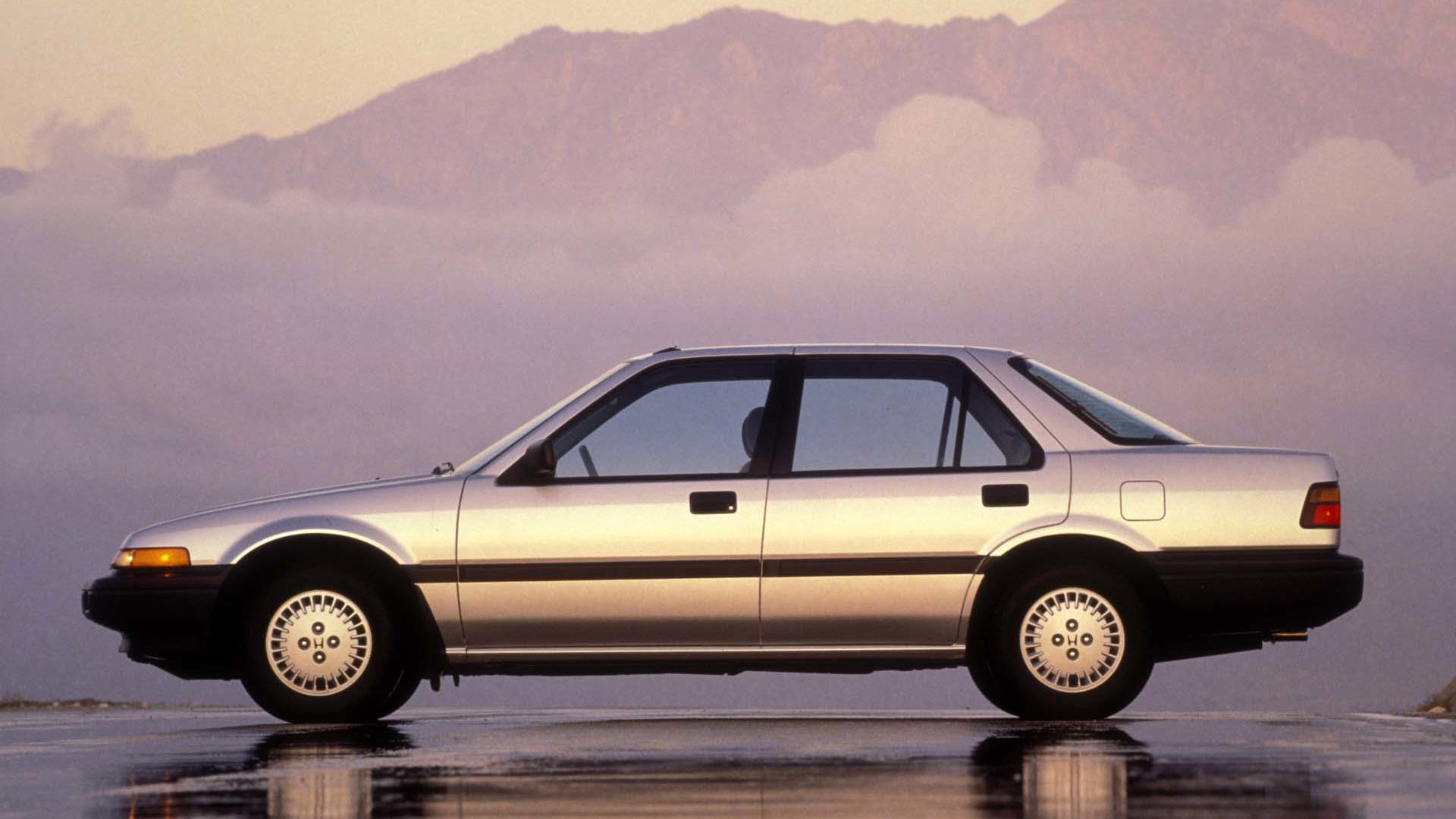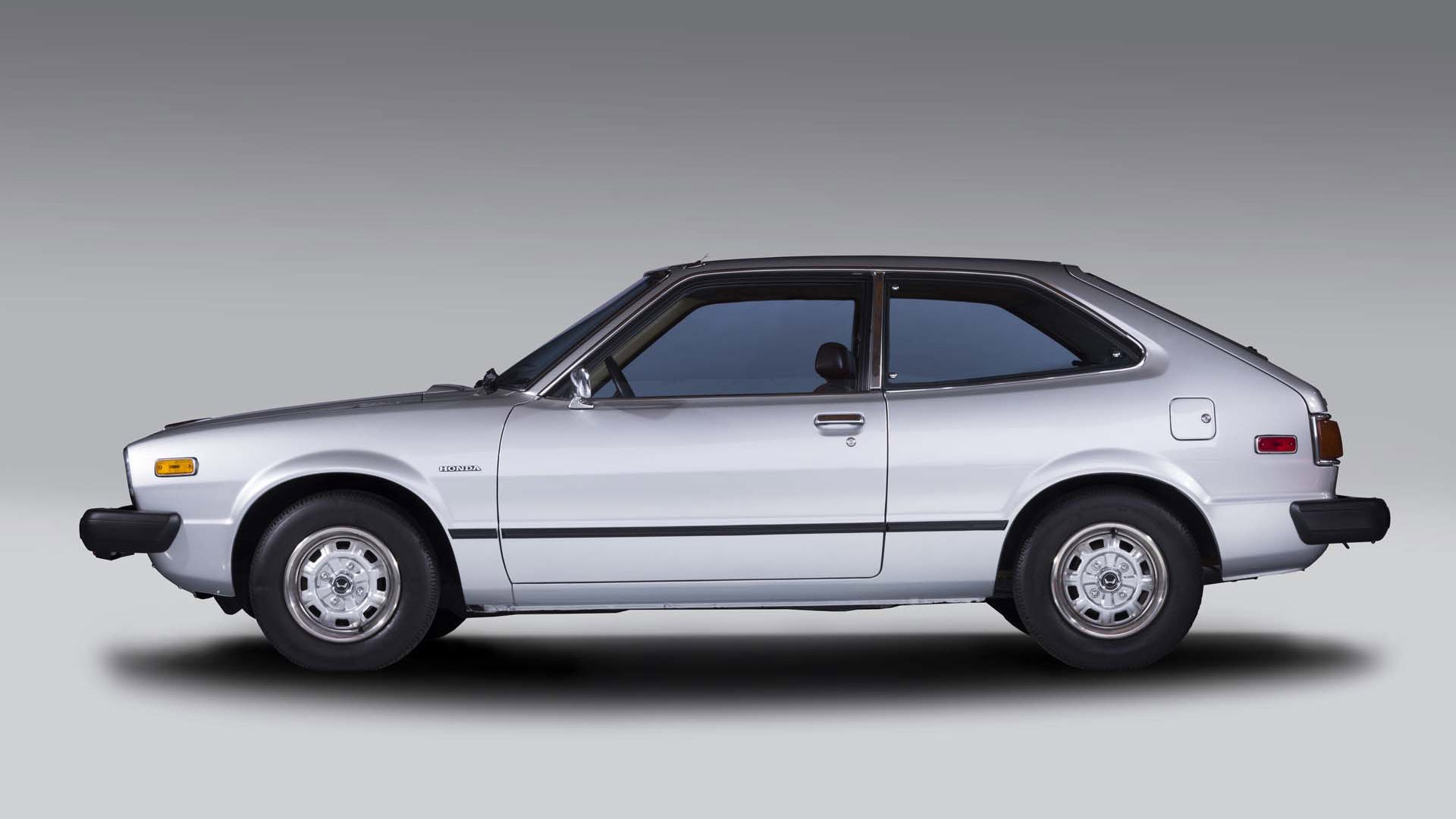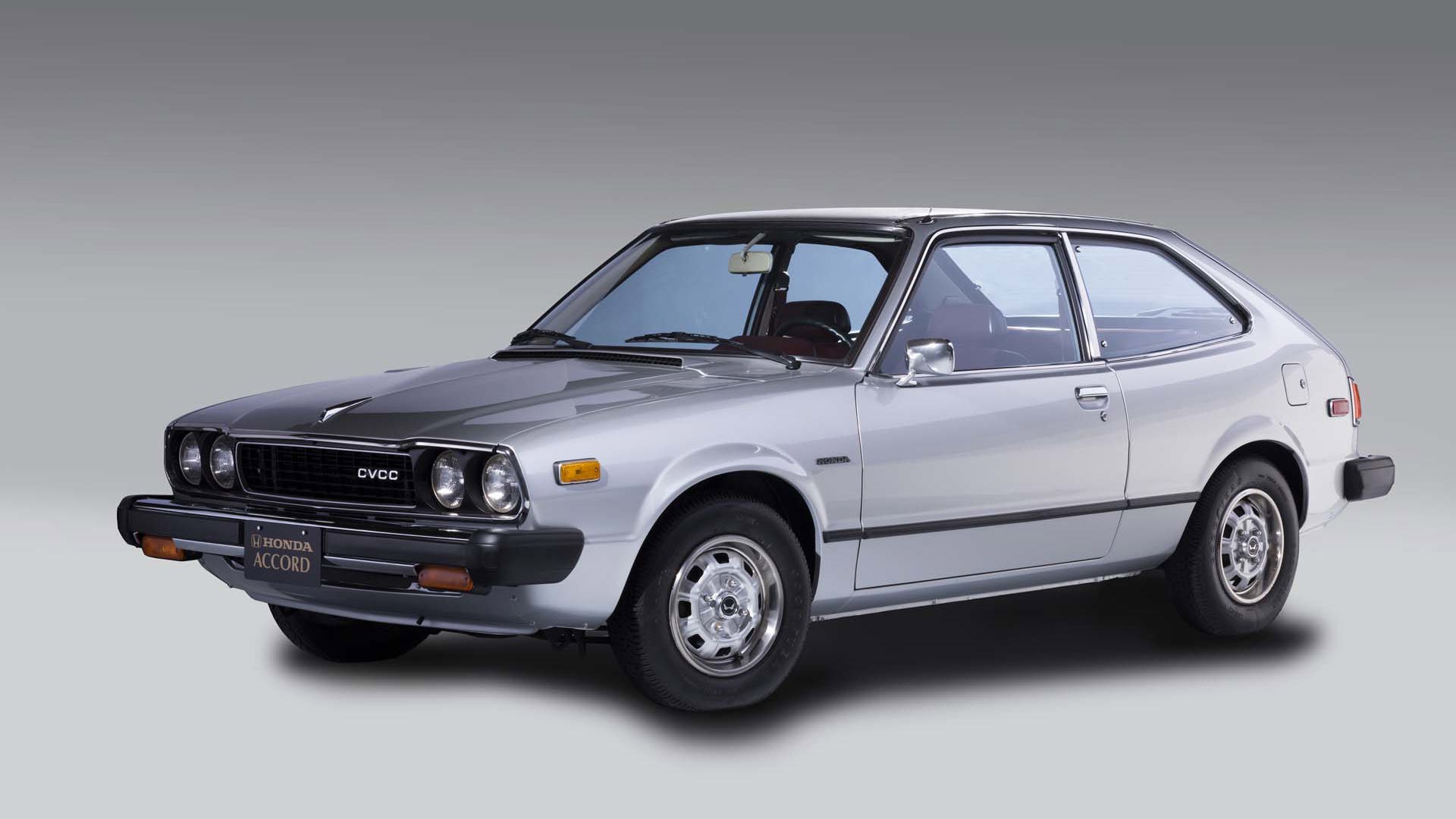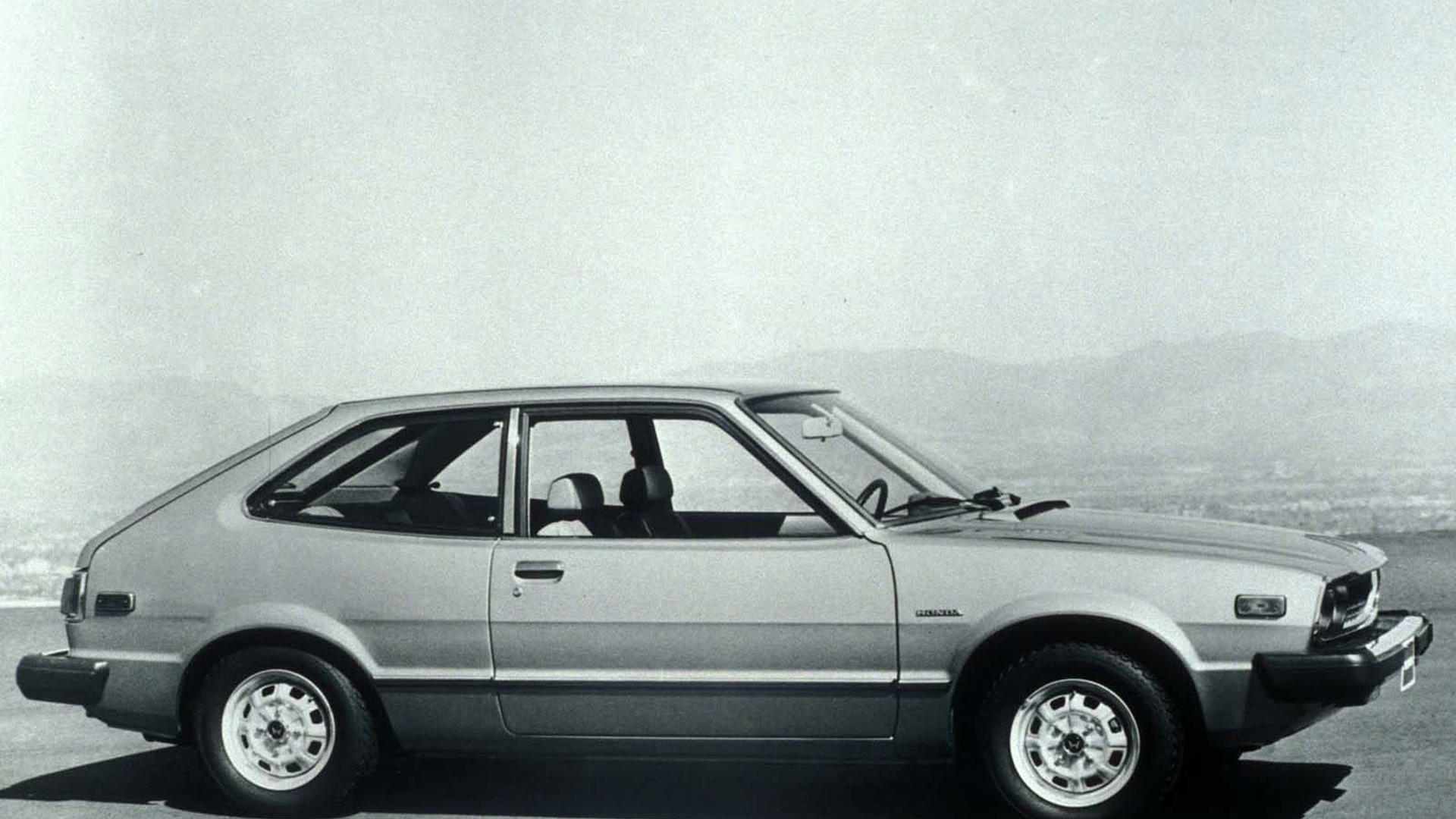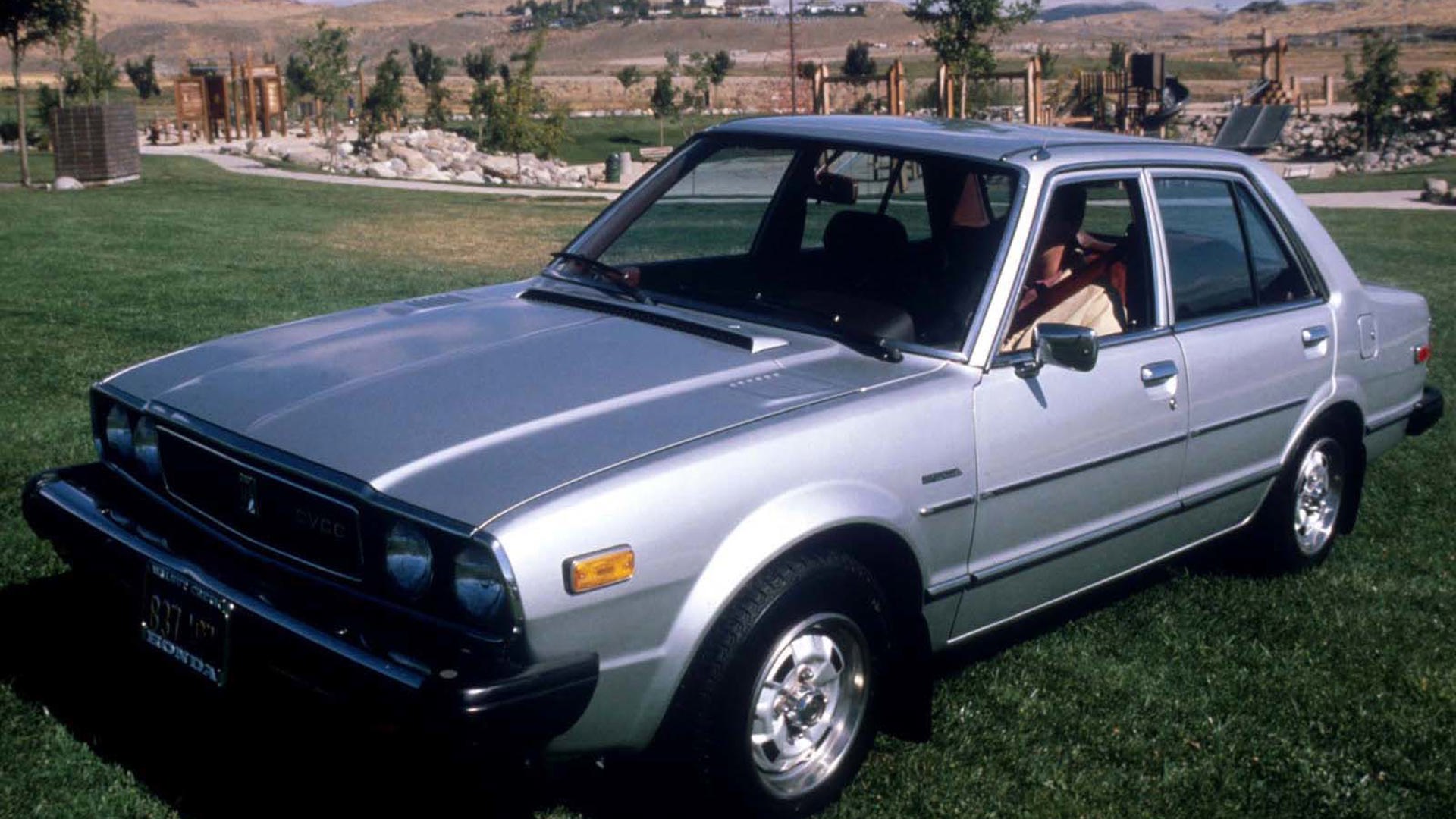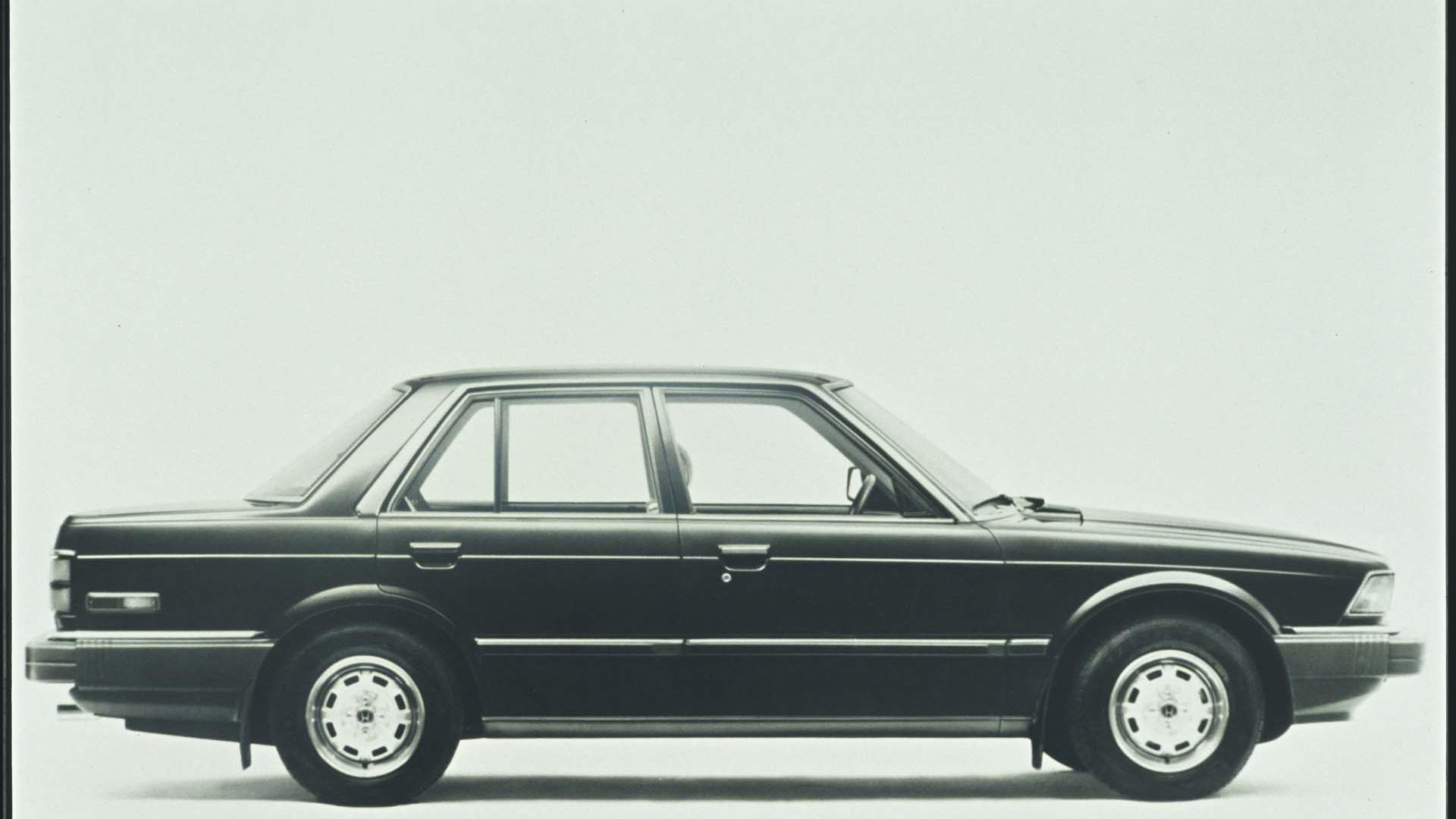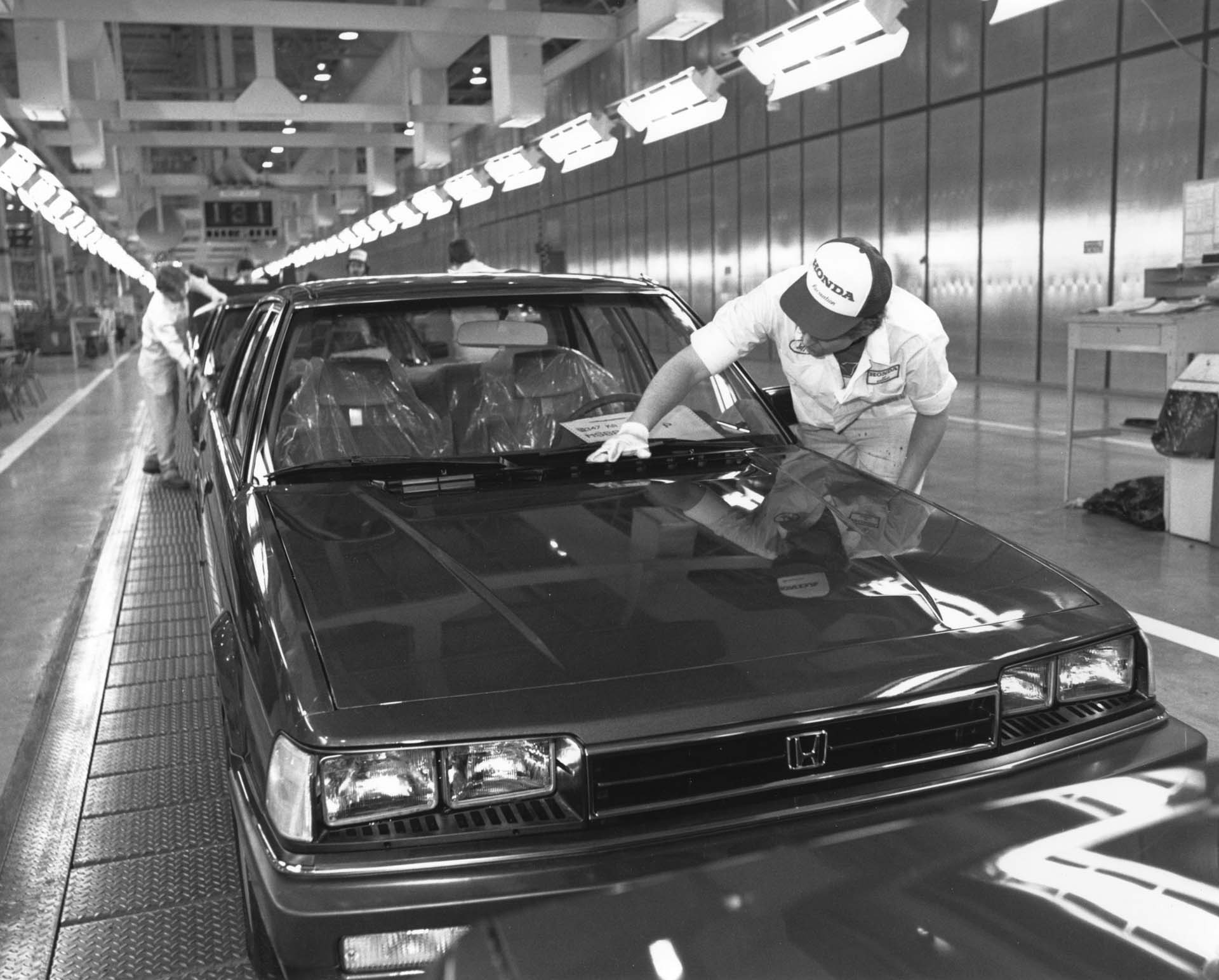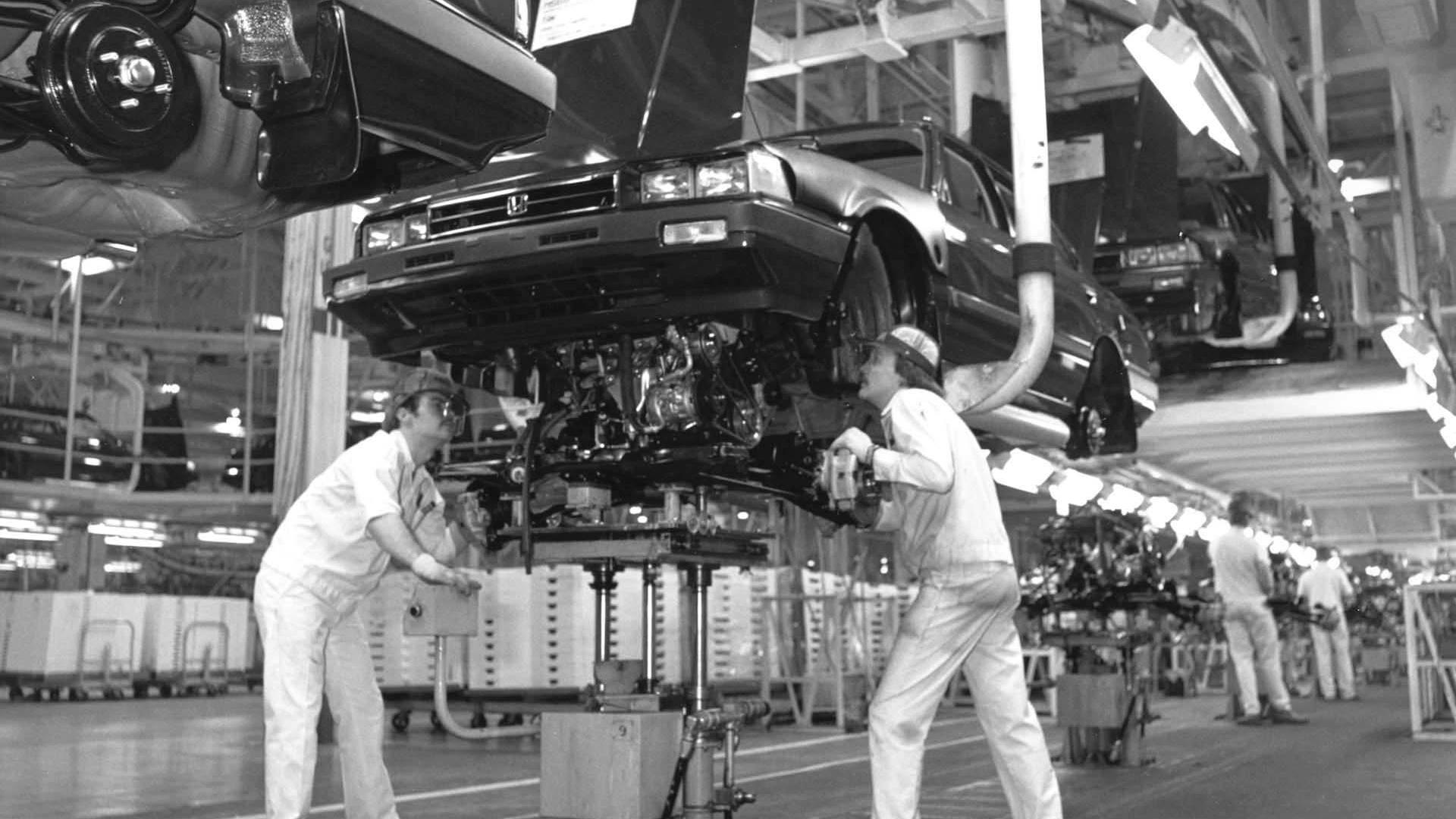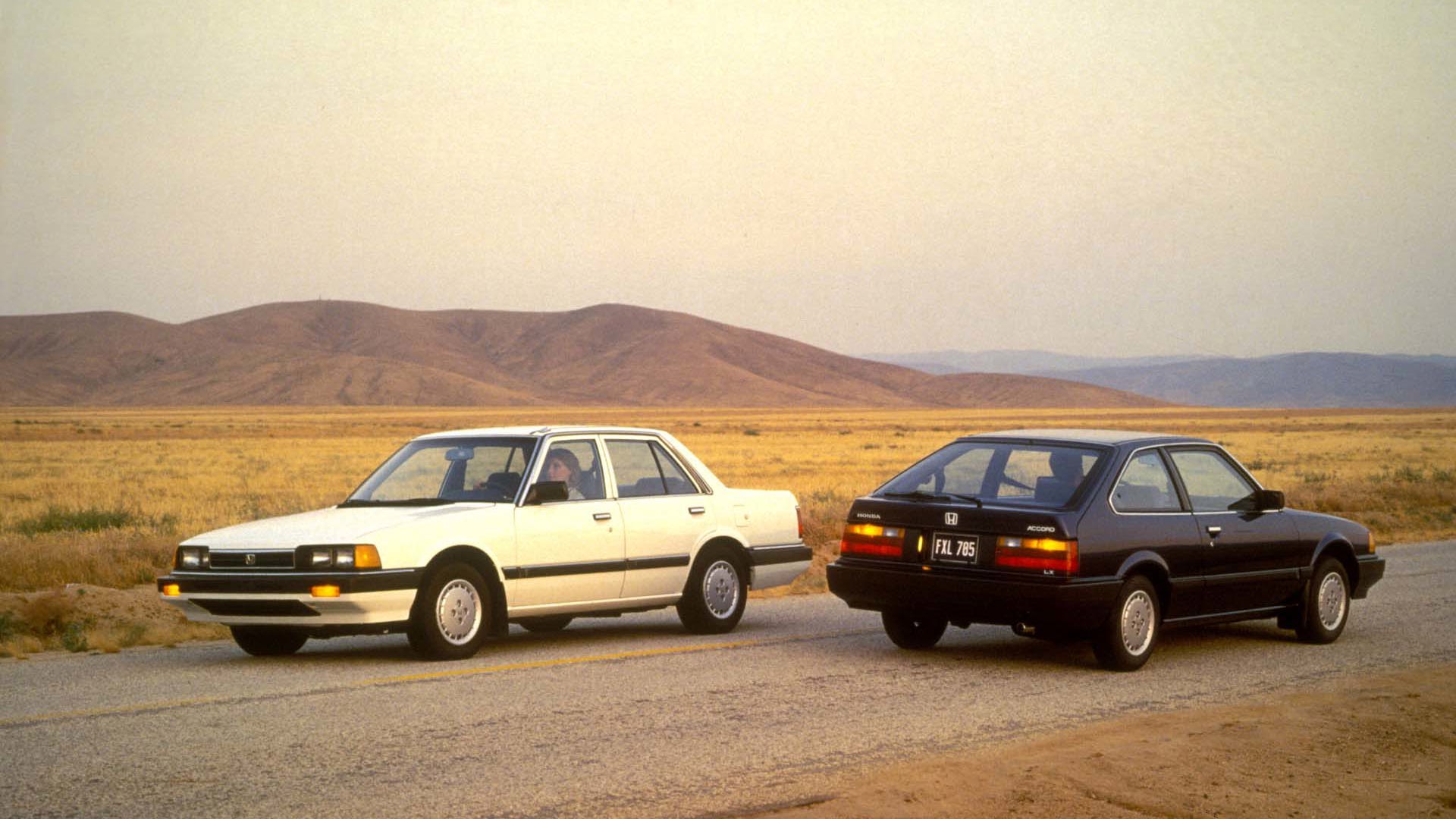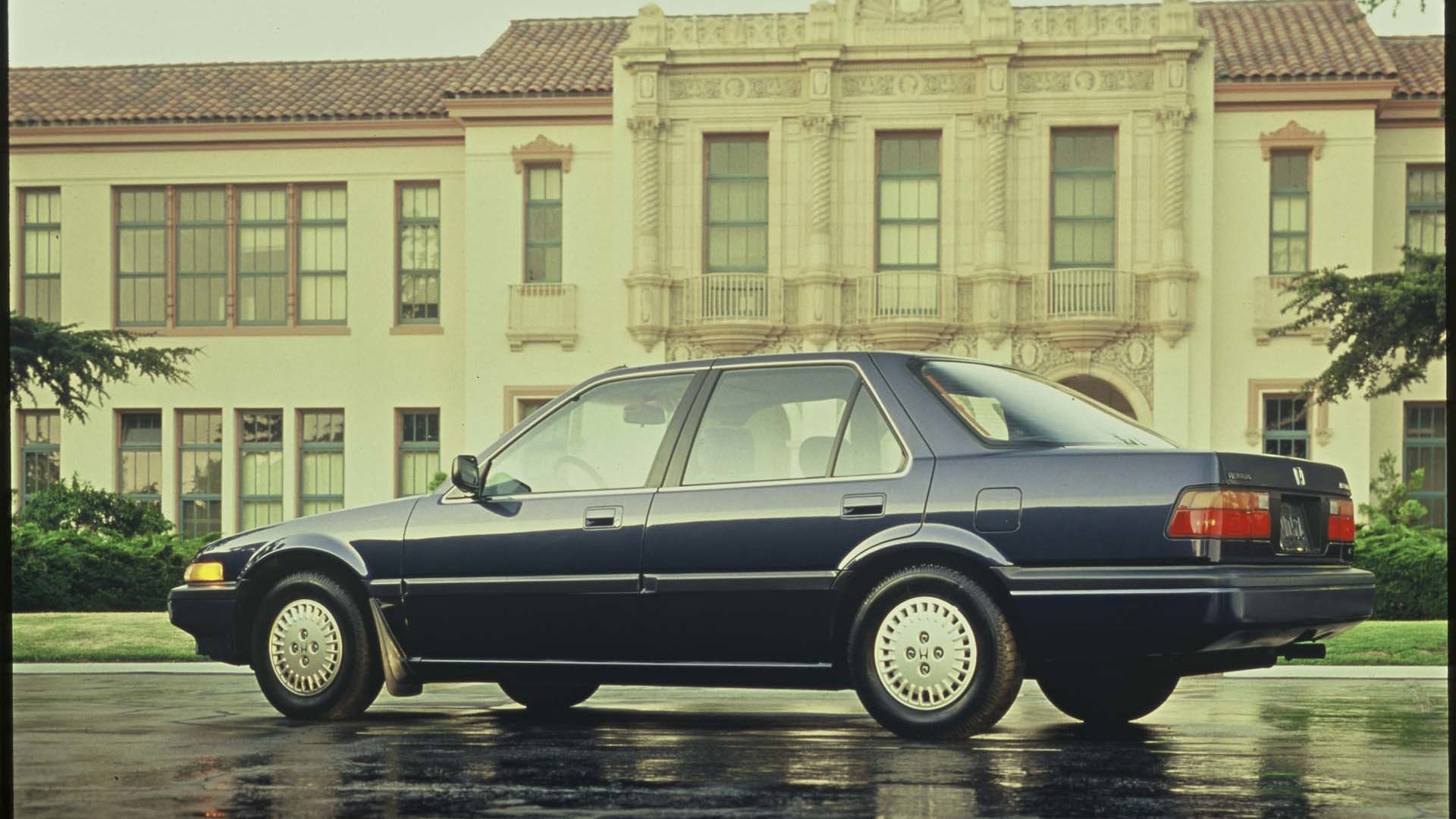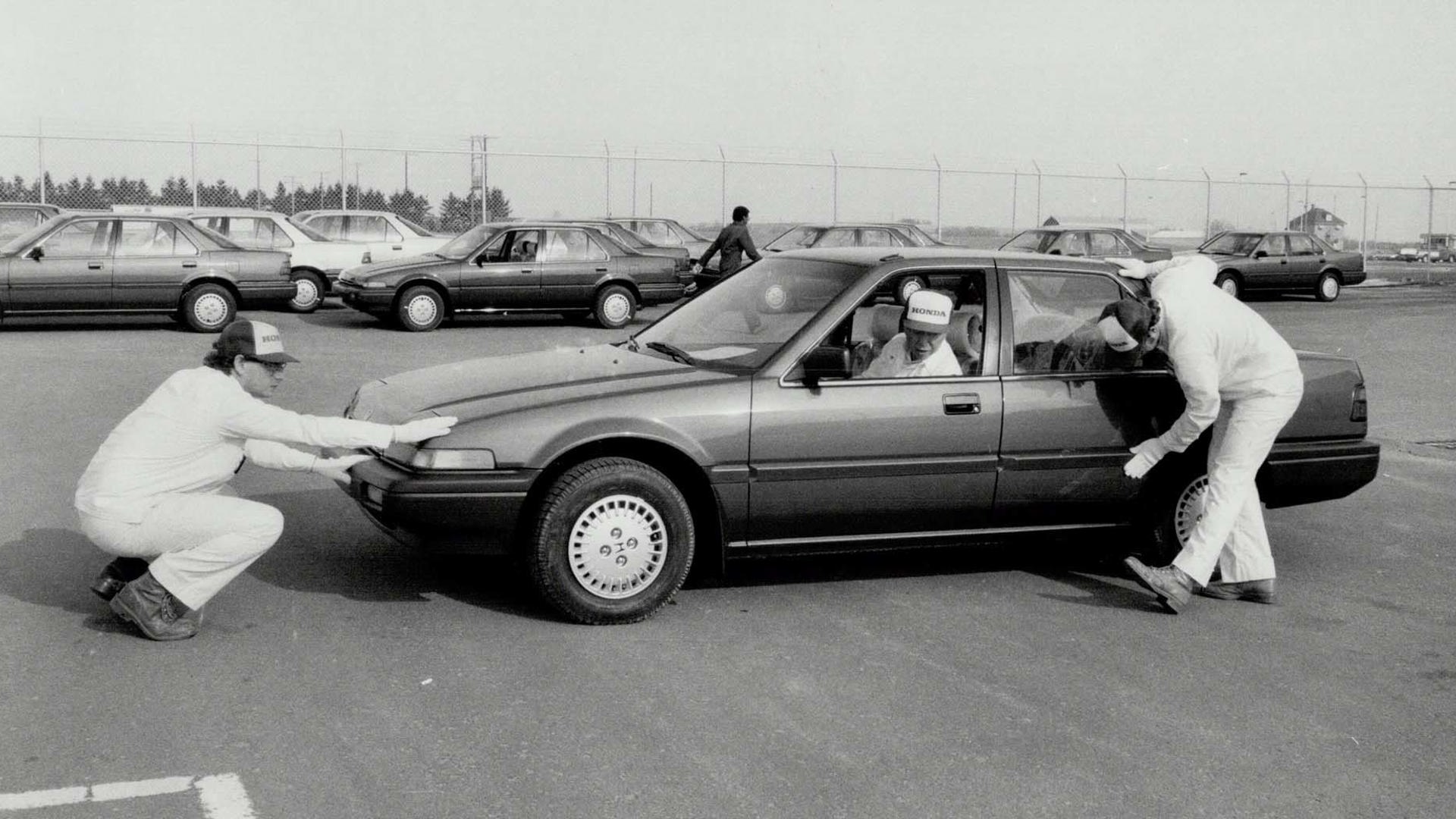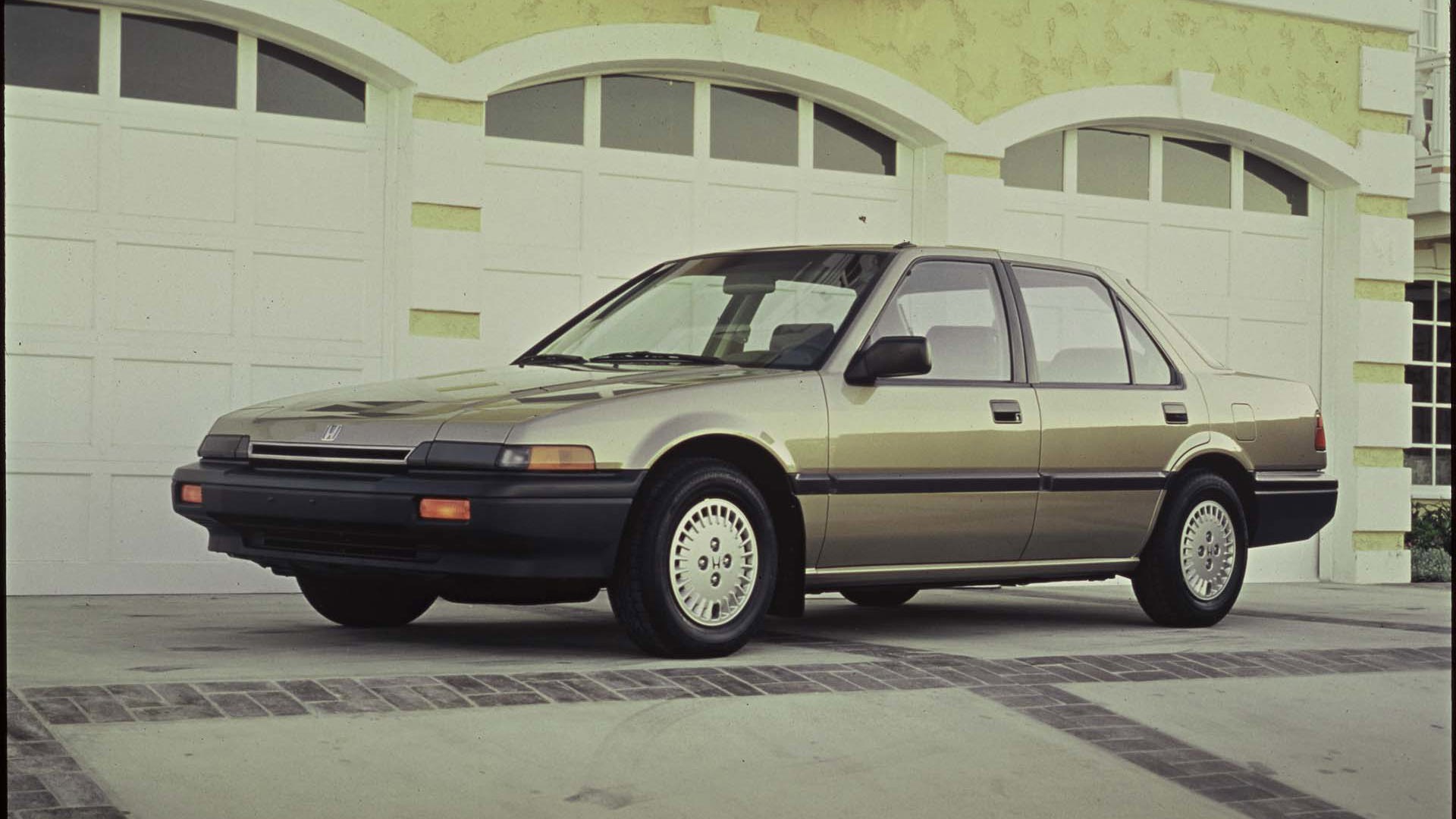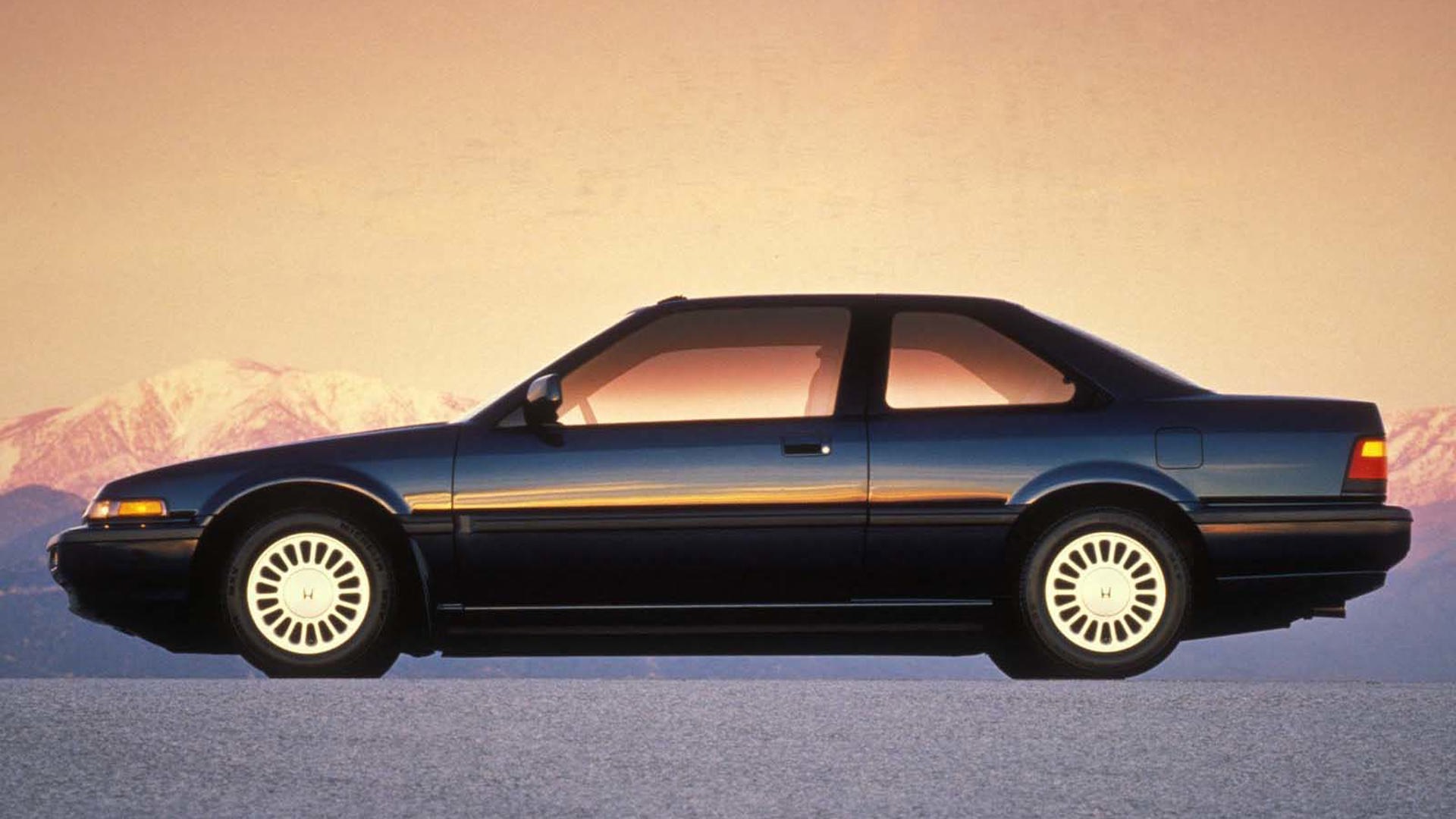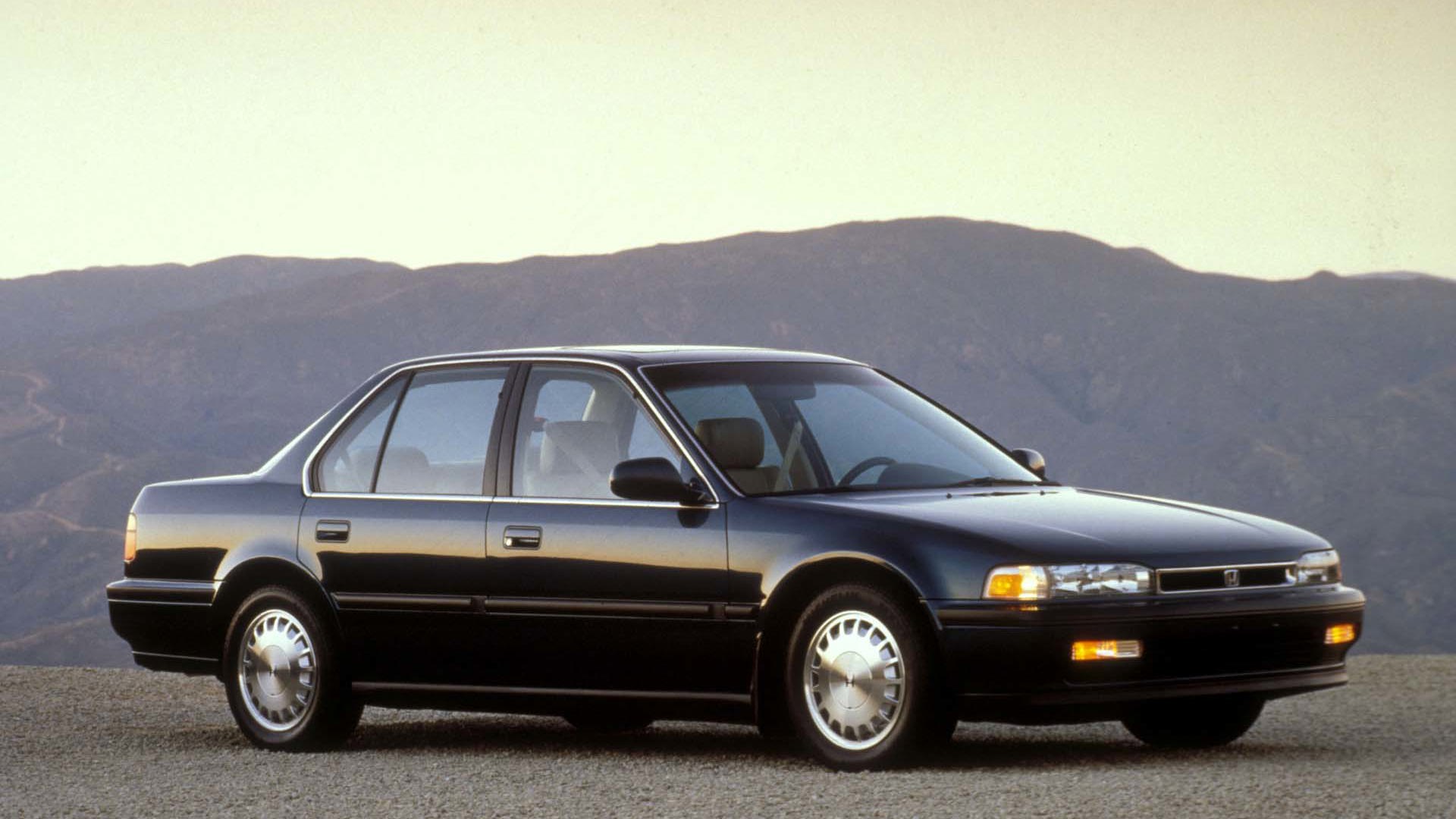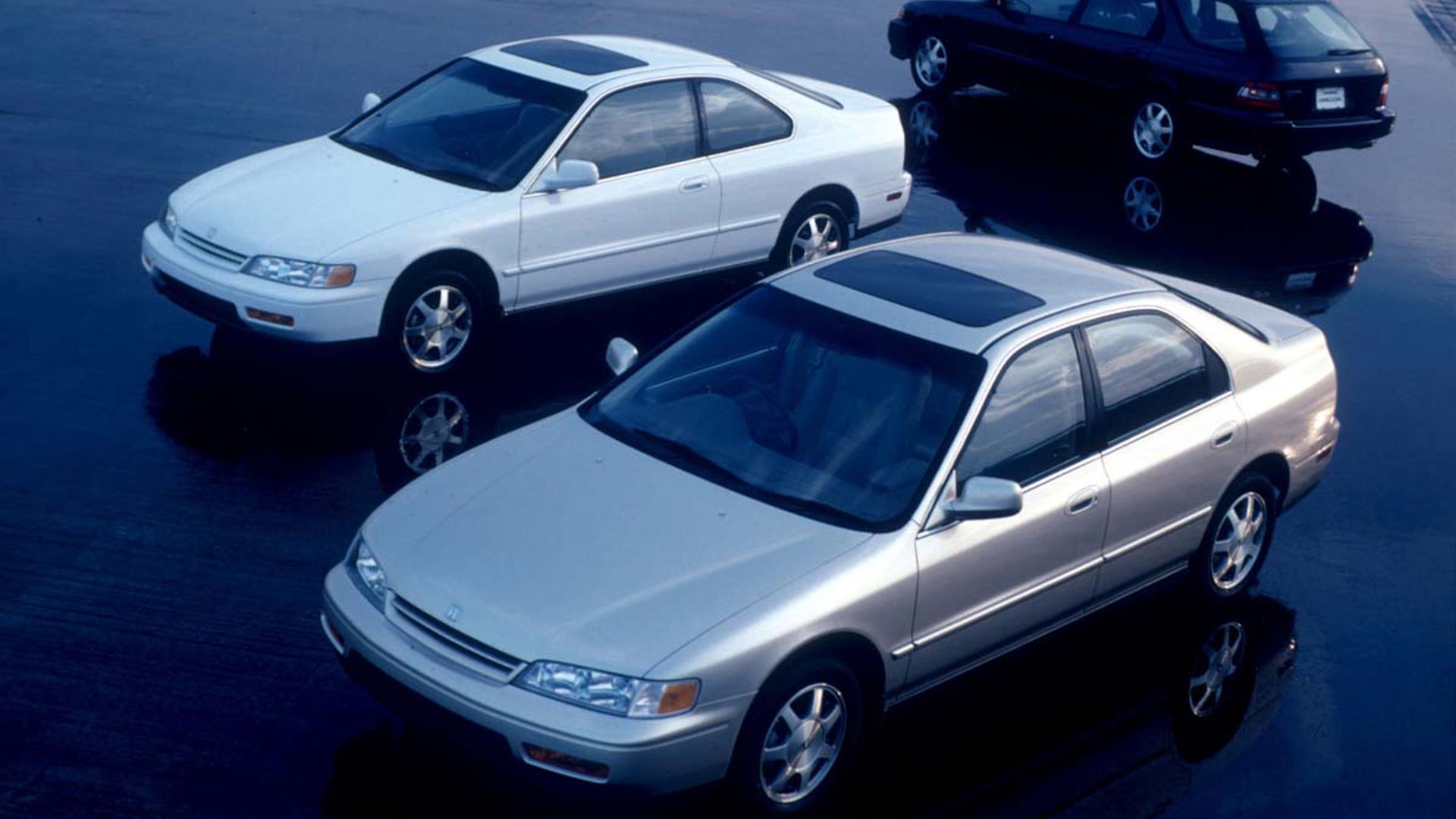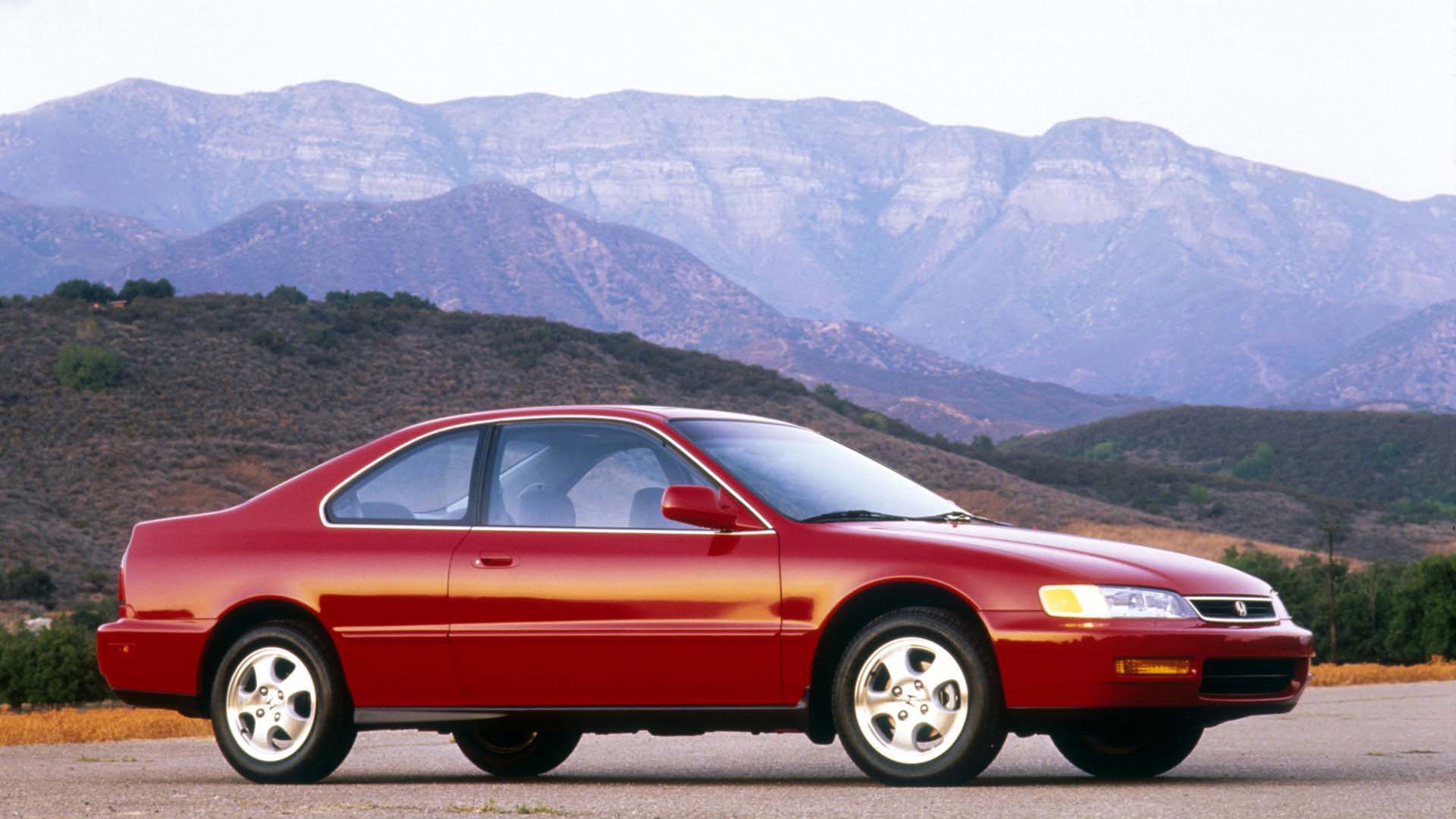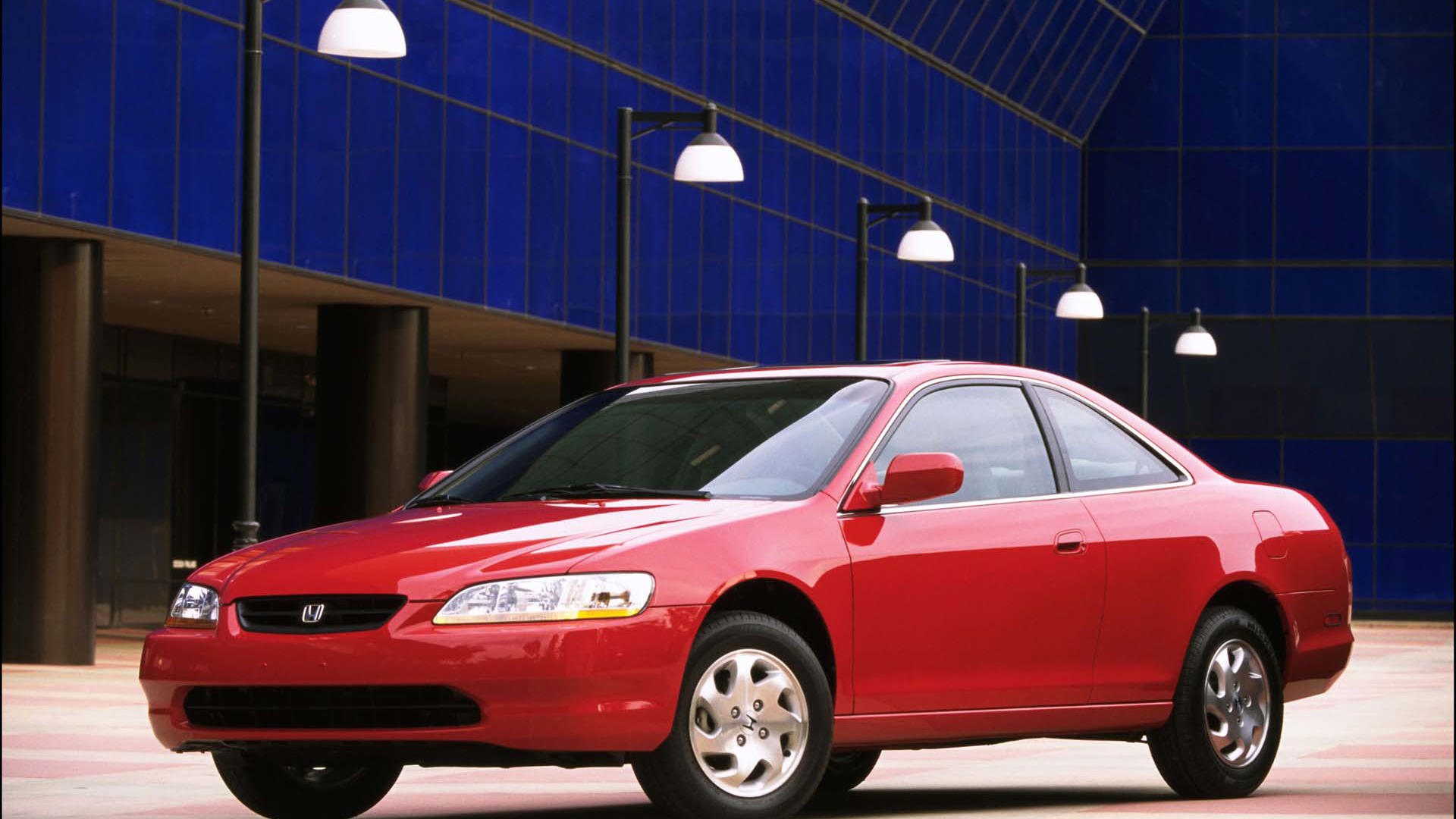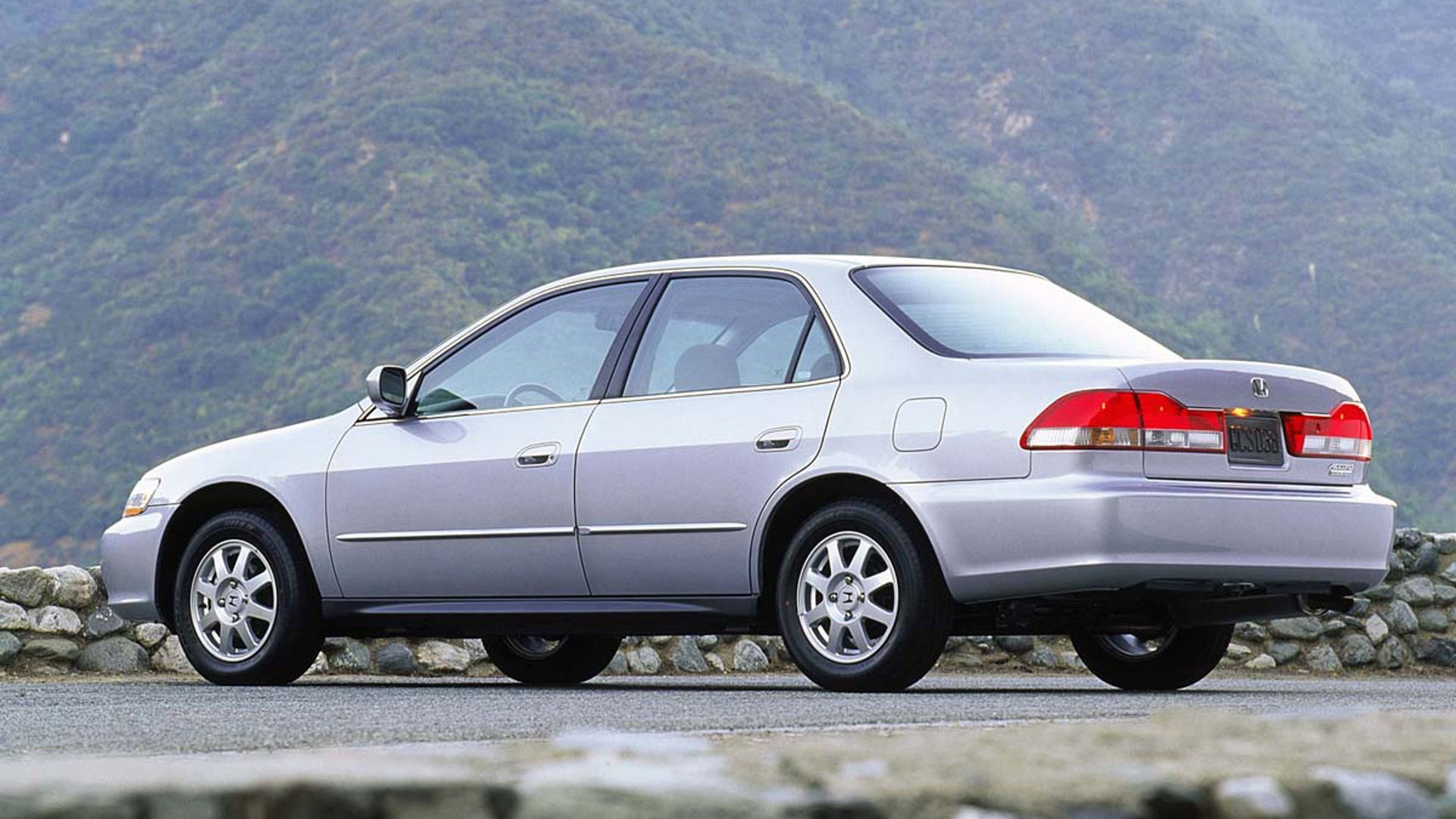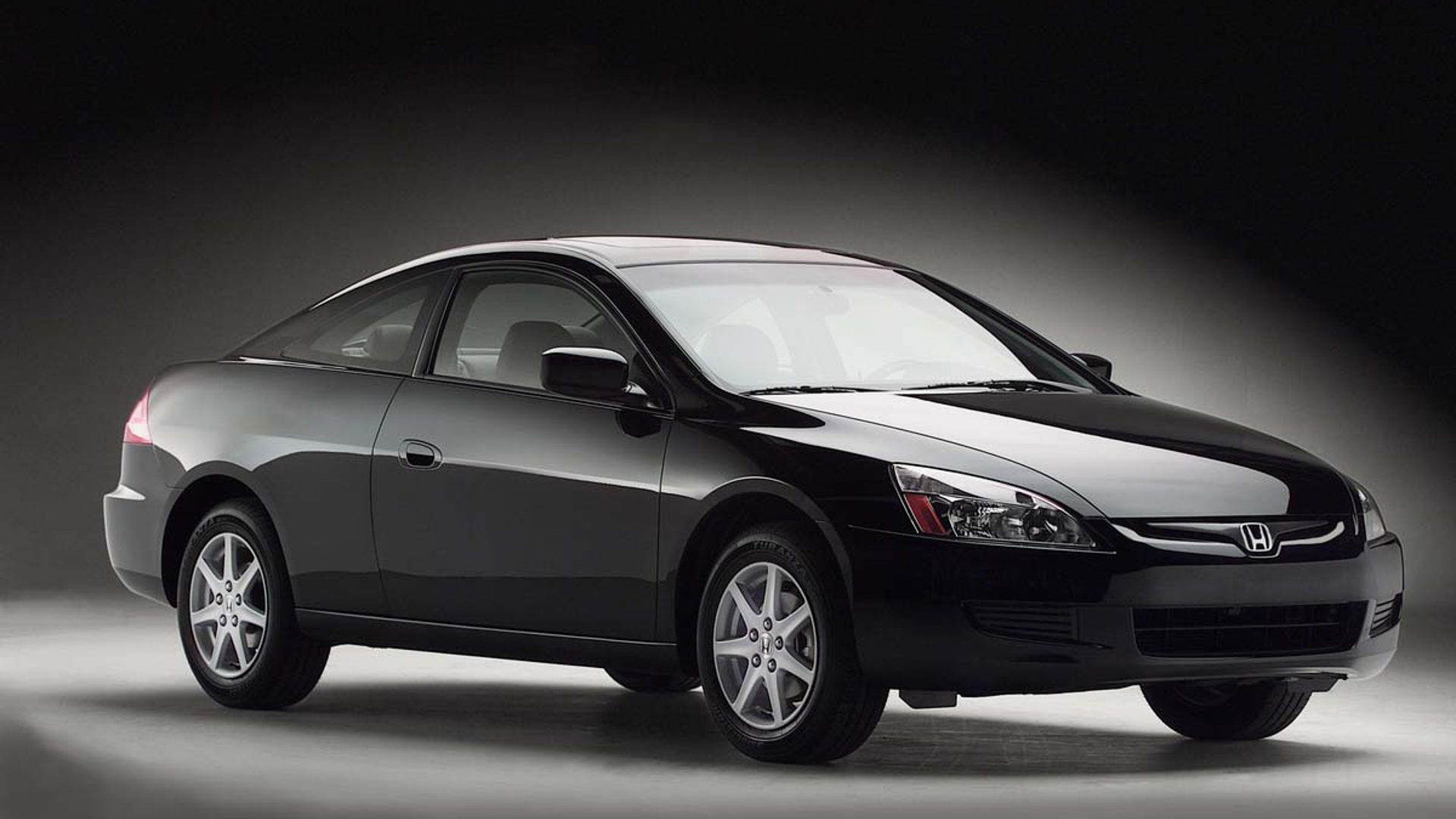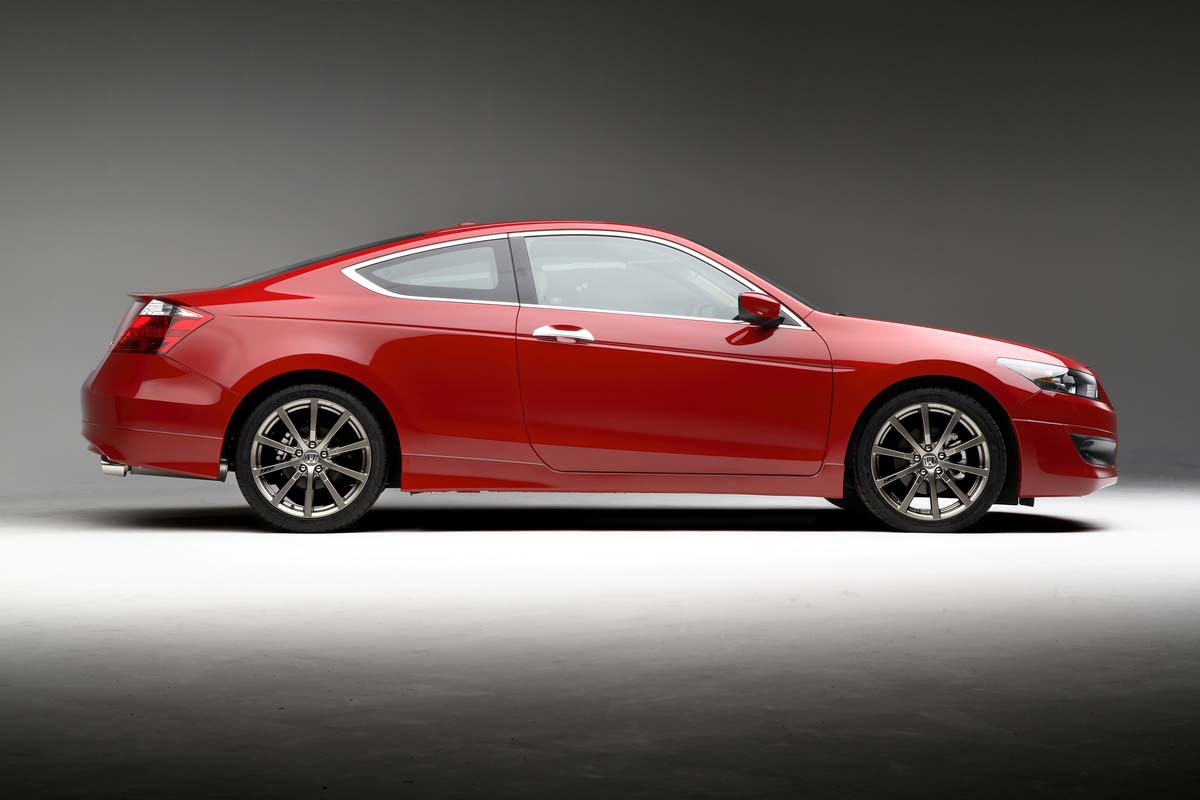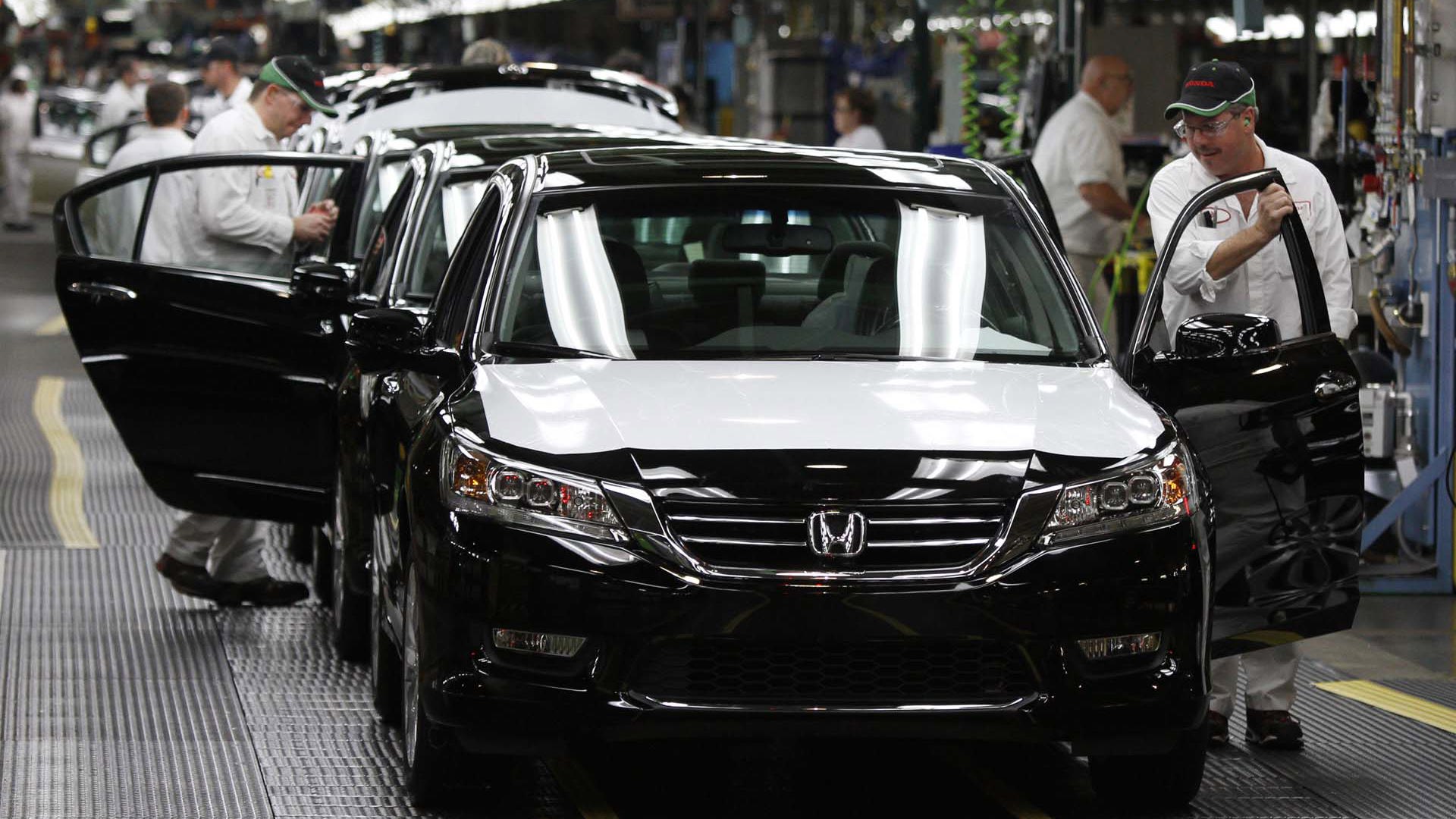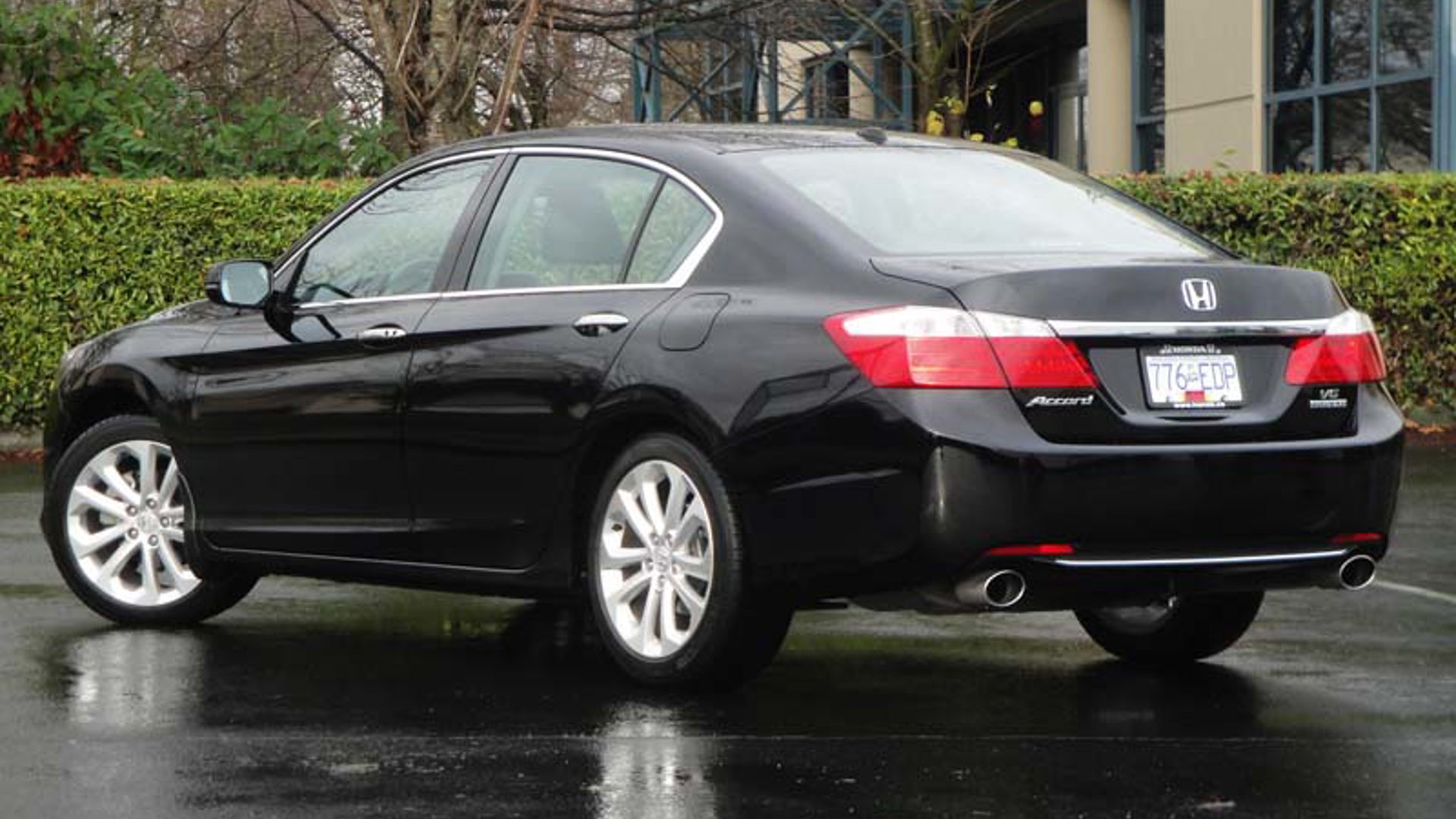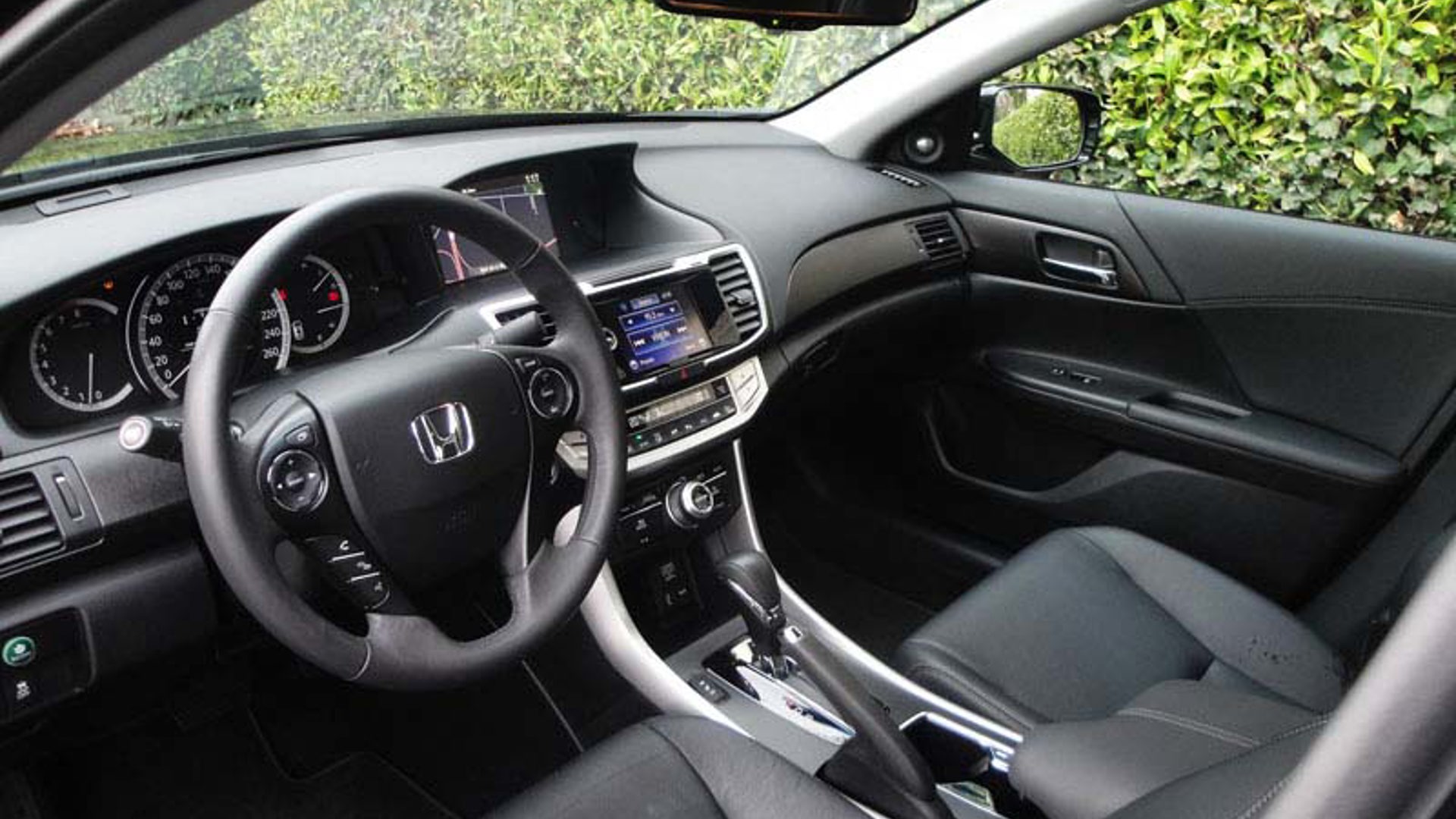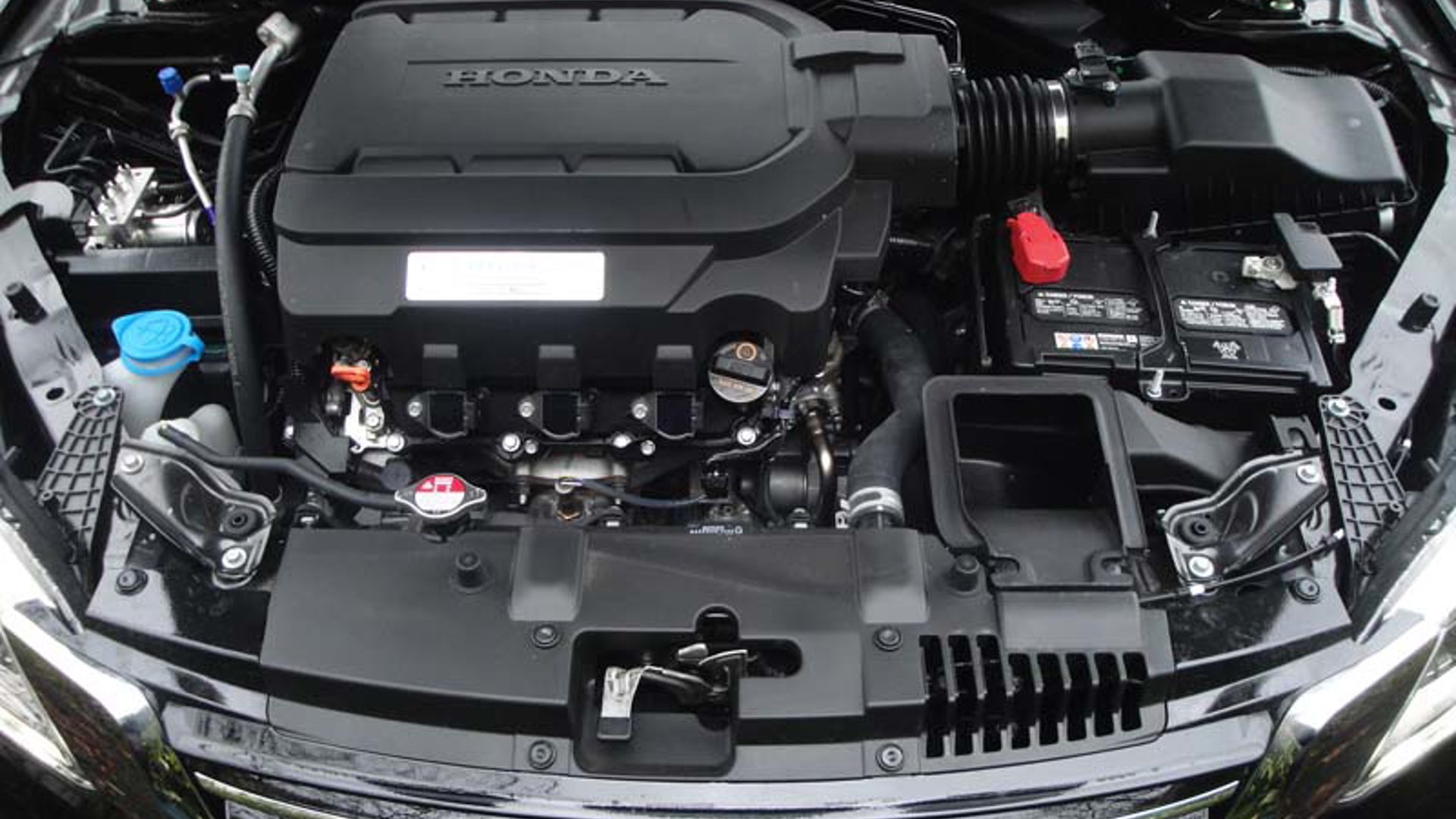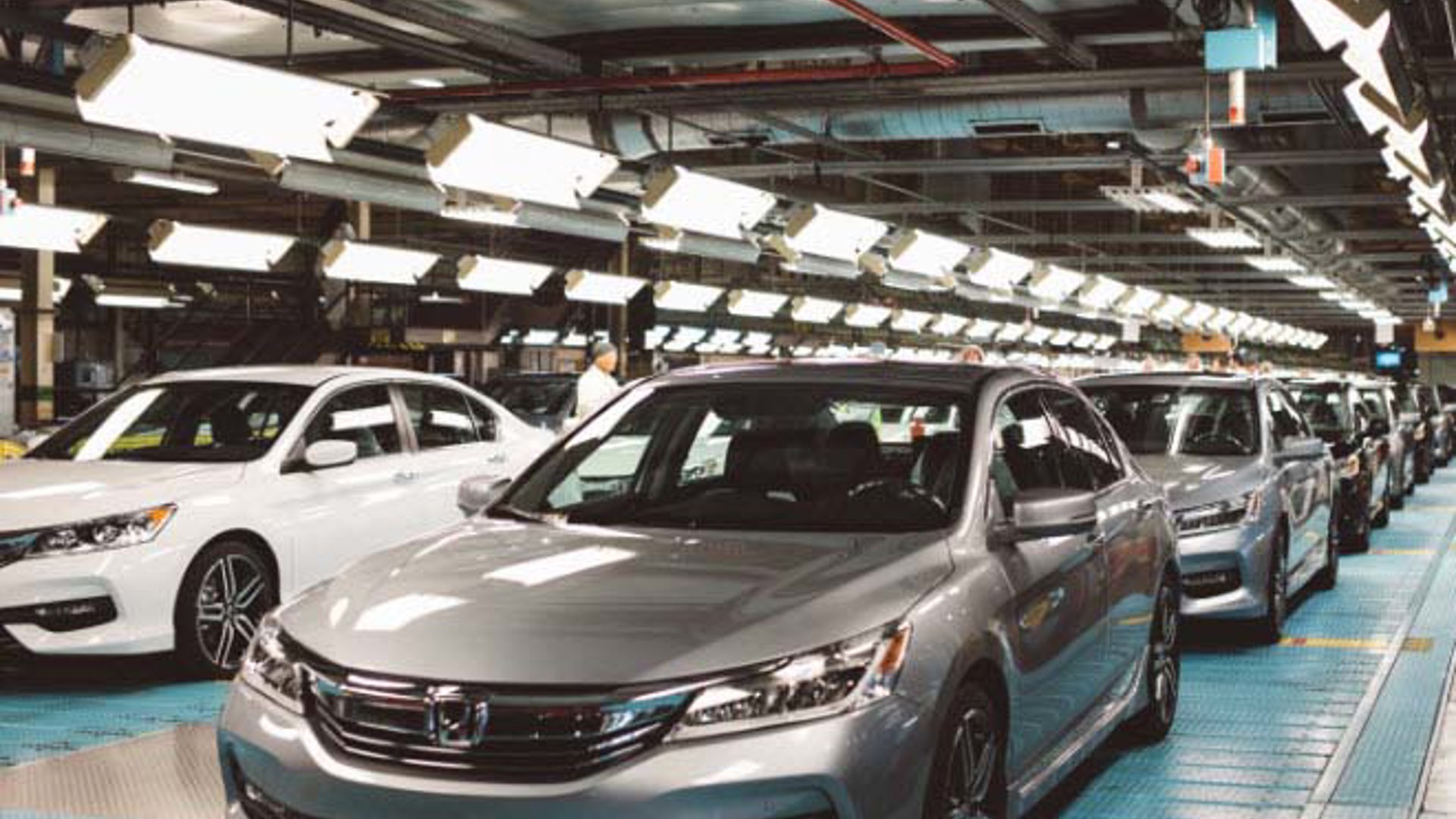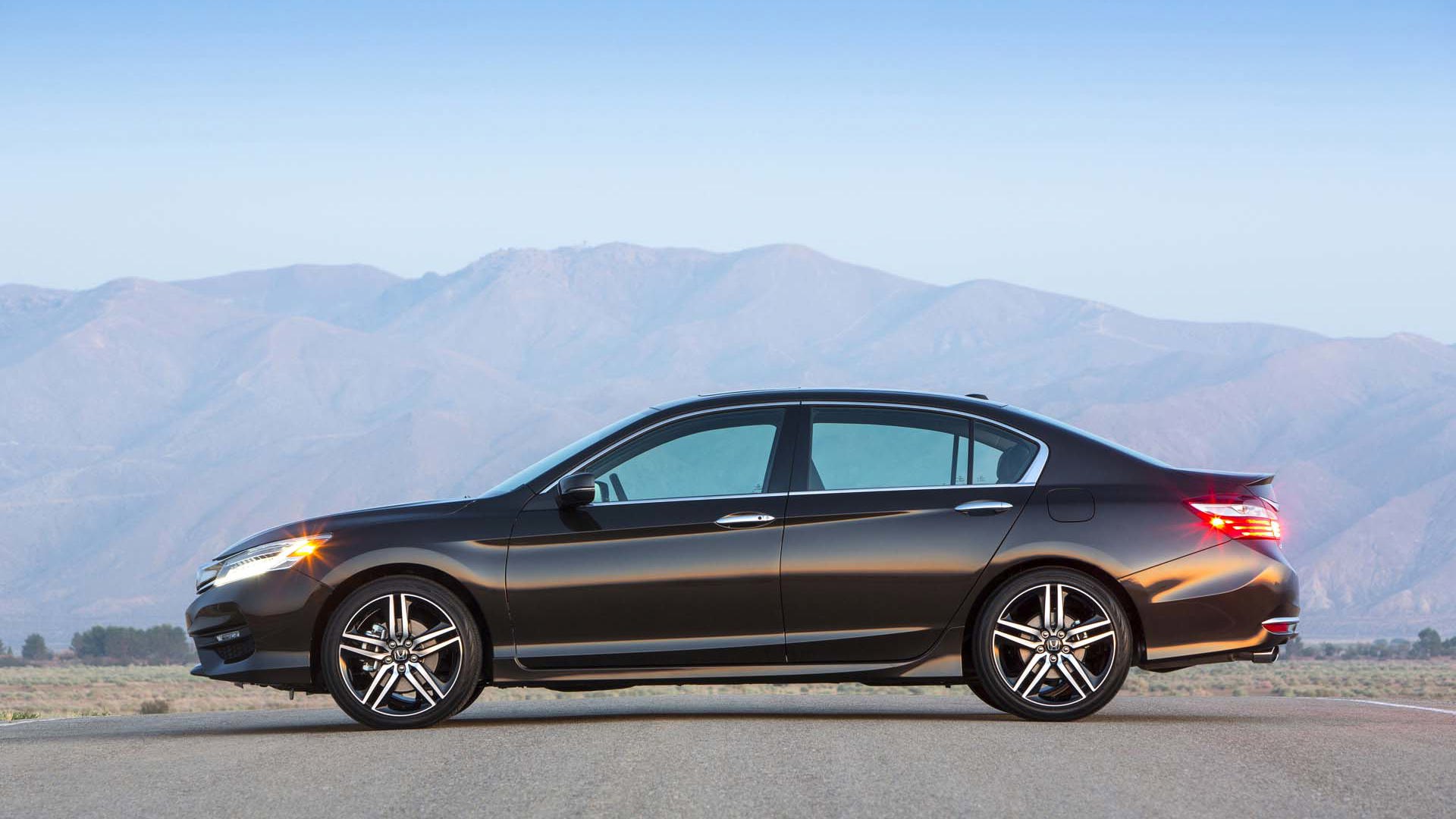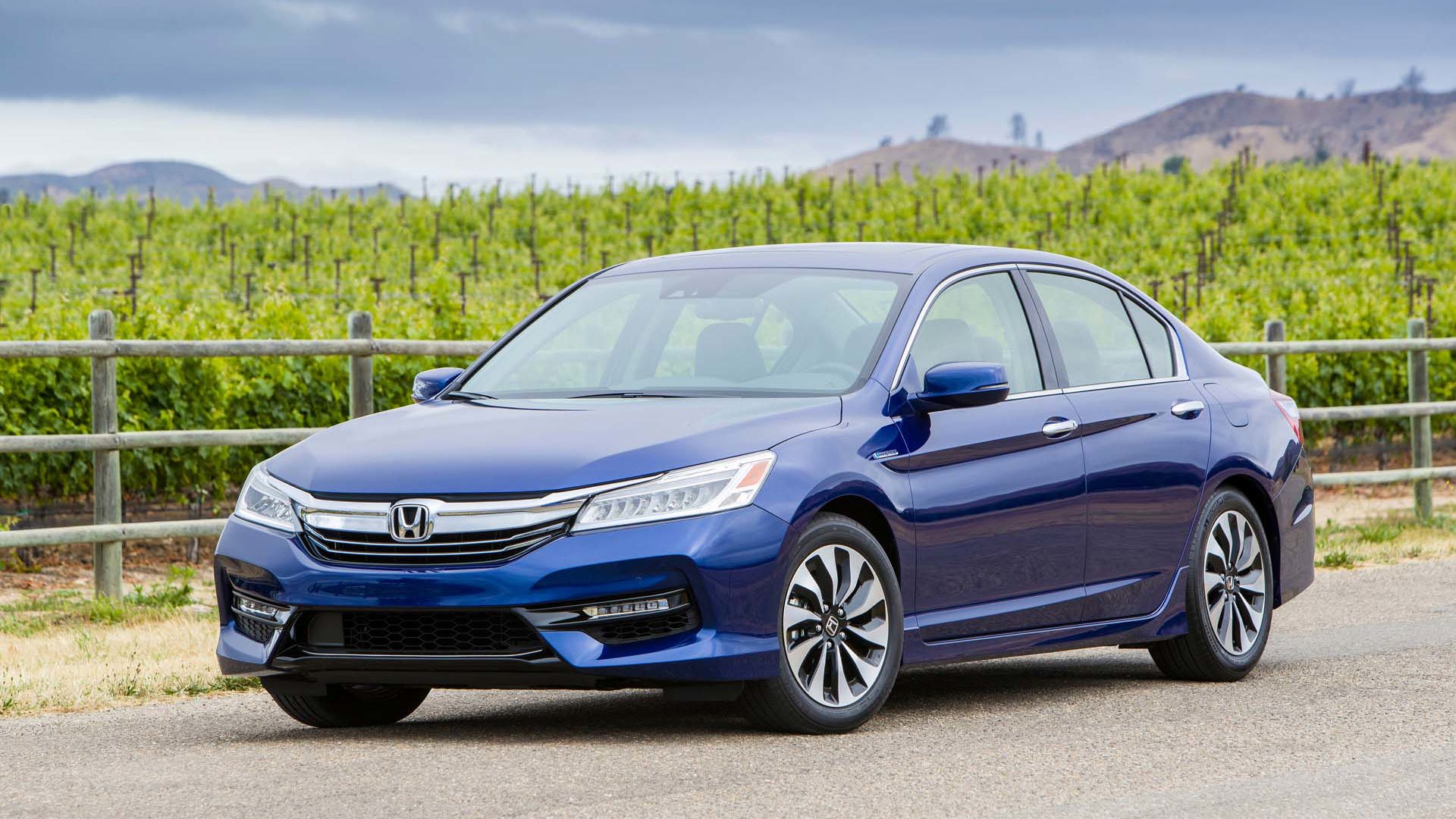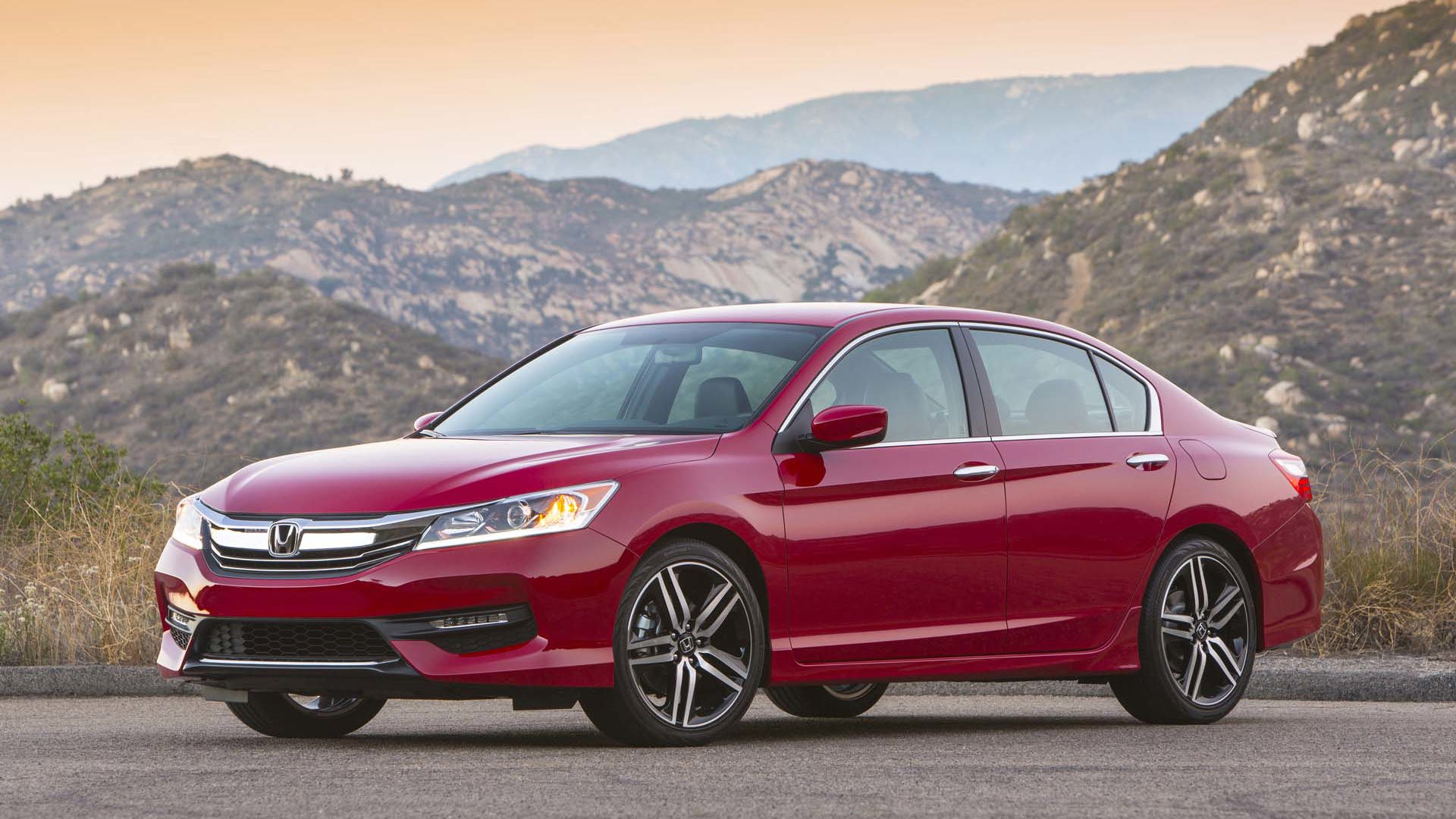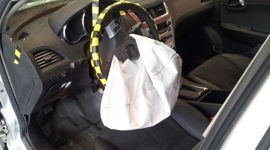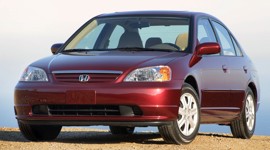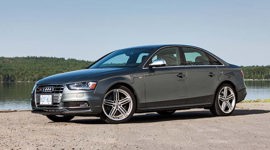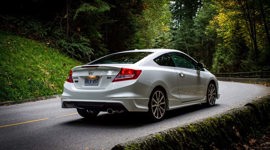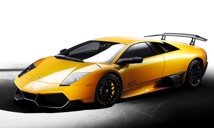At forty, the Honda Accord is officially middle-aged. For those of us, it’s a blobby sort of milestone to be achieved, a time to look back in time and wish we could reclaim our youth – apart from the silly haircuts. However, the Accord needs no such nostalgia: it’s as quick as it’s ever been, and can still be purchased with a zippy four-cylinder and even a manual transmission.
It may be a mainstay mid-sizer for the everyday, but there’s still some Honda vitality to love here. So, kick the rev counter up and engage VTEC as we blow out the candles. Happy birthday, Accord, you’re looking pretty good for your age.
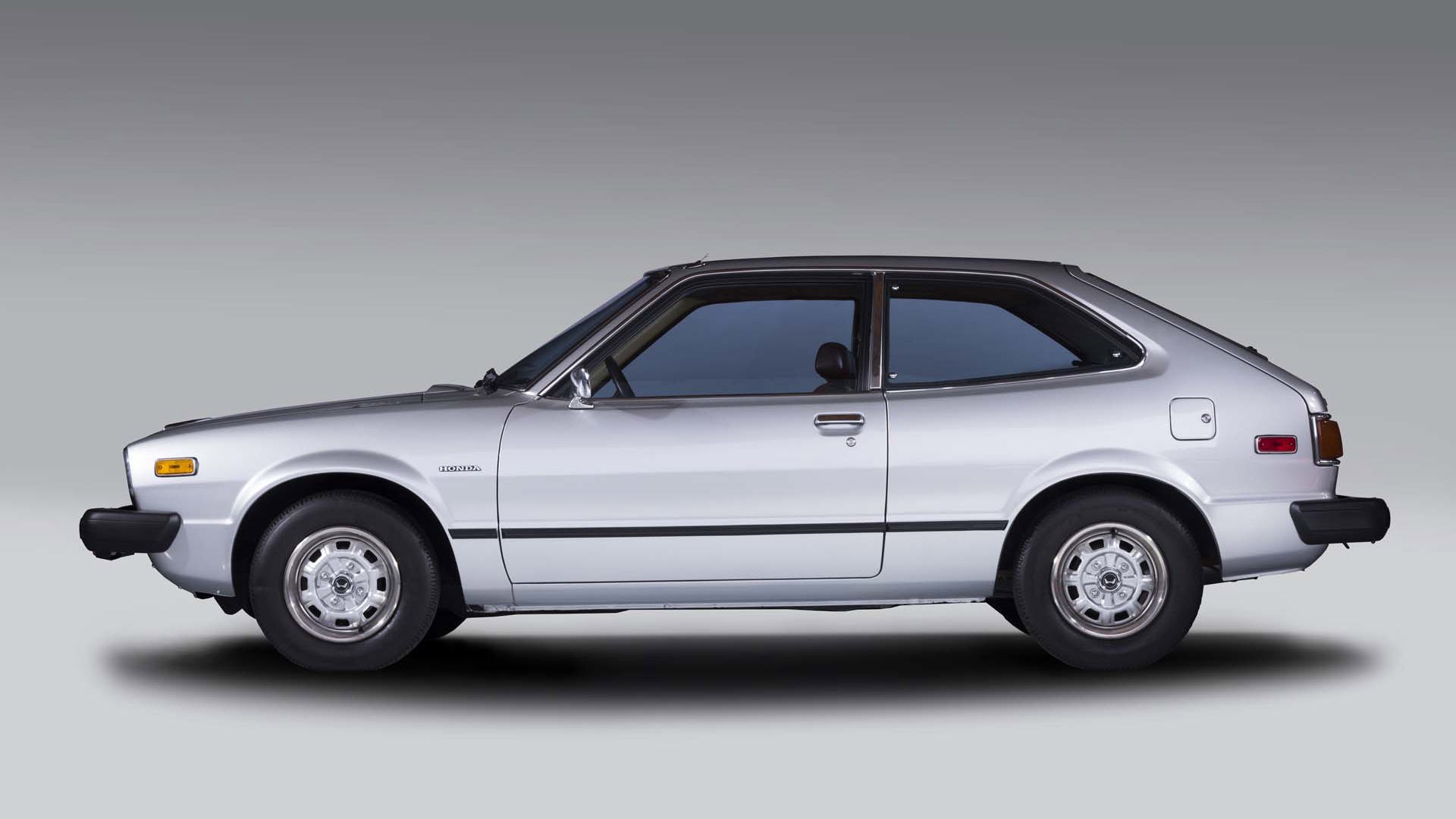
Introduced in May of 1976, the Accord’s arrival could not have been more perfectly timed. Honda’s arrival in the Canadian market with the S600 and in the US with the N600 was a bit of a fizzle, sales-wise. These cars are still around, but they were orphans. However, by the mid-70s, Honda was riding a wave of enthusiasm for the thrifty little Honda Civic.
A little bigger Civic that still saved fuel and had nippy handling? Well that’s a win. The Accord arrived as a two-door hatchback with standard features like AM/FM stereo and a rear wiper (wow!), and a fuel-sipping 68 hp four-cylinder engine. Okay, so that last bit is the kind of power level you expect from a child’s dirt bike these days, but facing off against a 900 kg curb weight, the Accord was quick enough to dart past the whale-sized land yachts of the time.
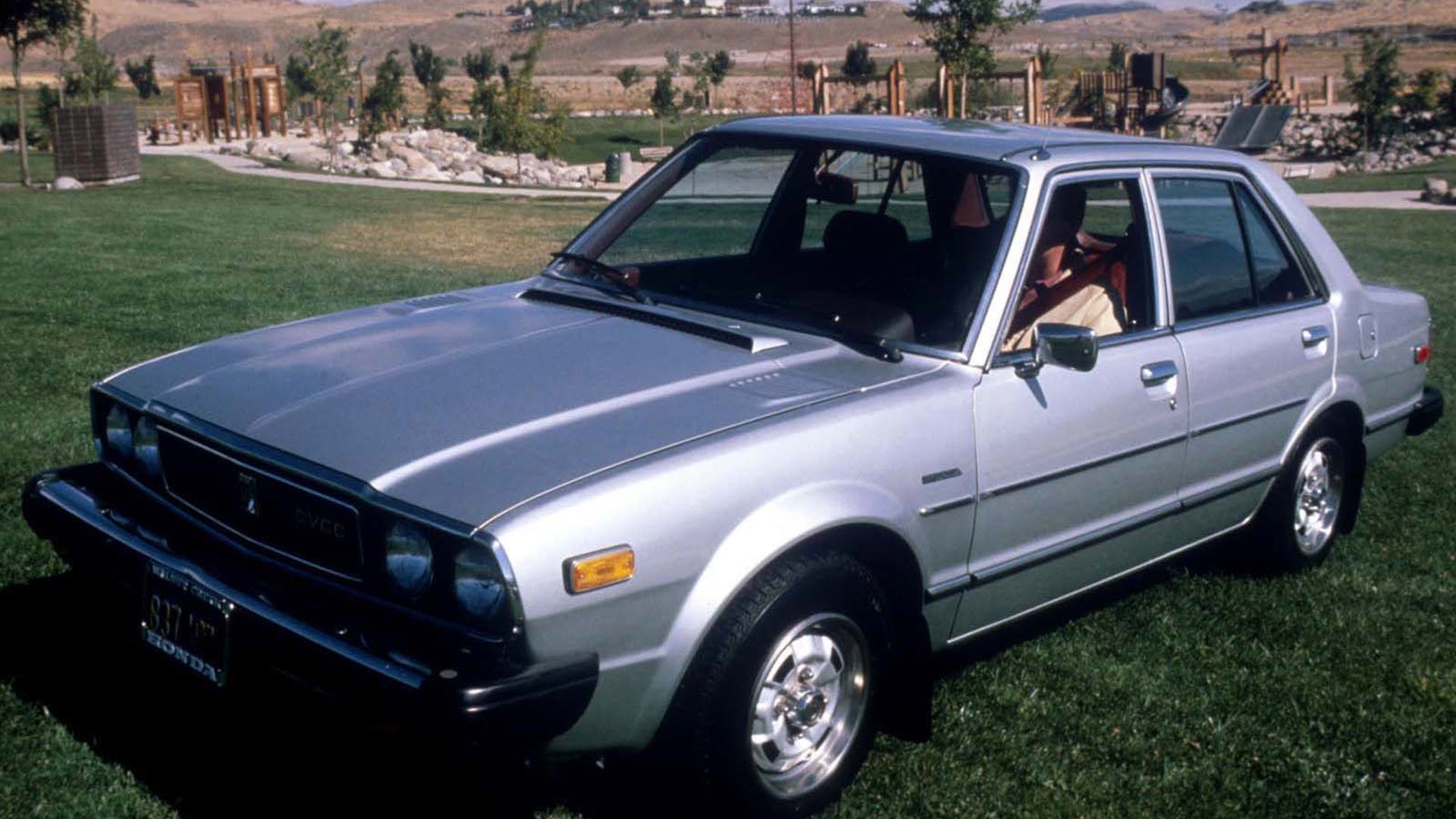
Honda started building a four-door sedan Accord in 1977, with the car arriving in the US and Canada about a year later. You could buy your Accord with power steering, air-conditioning, and a five-speed manual or two-speed semi-automatic transmission. A couple of years later, a three-speed automatic was on offer as well, and the engine grew in size from 1.6L to 1.8L.
Demand for the Accord far exceeded supply, which led to dealers tacking on extras and charging more money. However, customers seemed happy to pay a premium, as their cars would occasionally be worth more than they’d paid several months down the road. Further, the energetic little Accord delivered on its promises, with excellent reliability and consistently good fuel economy.
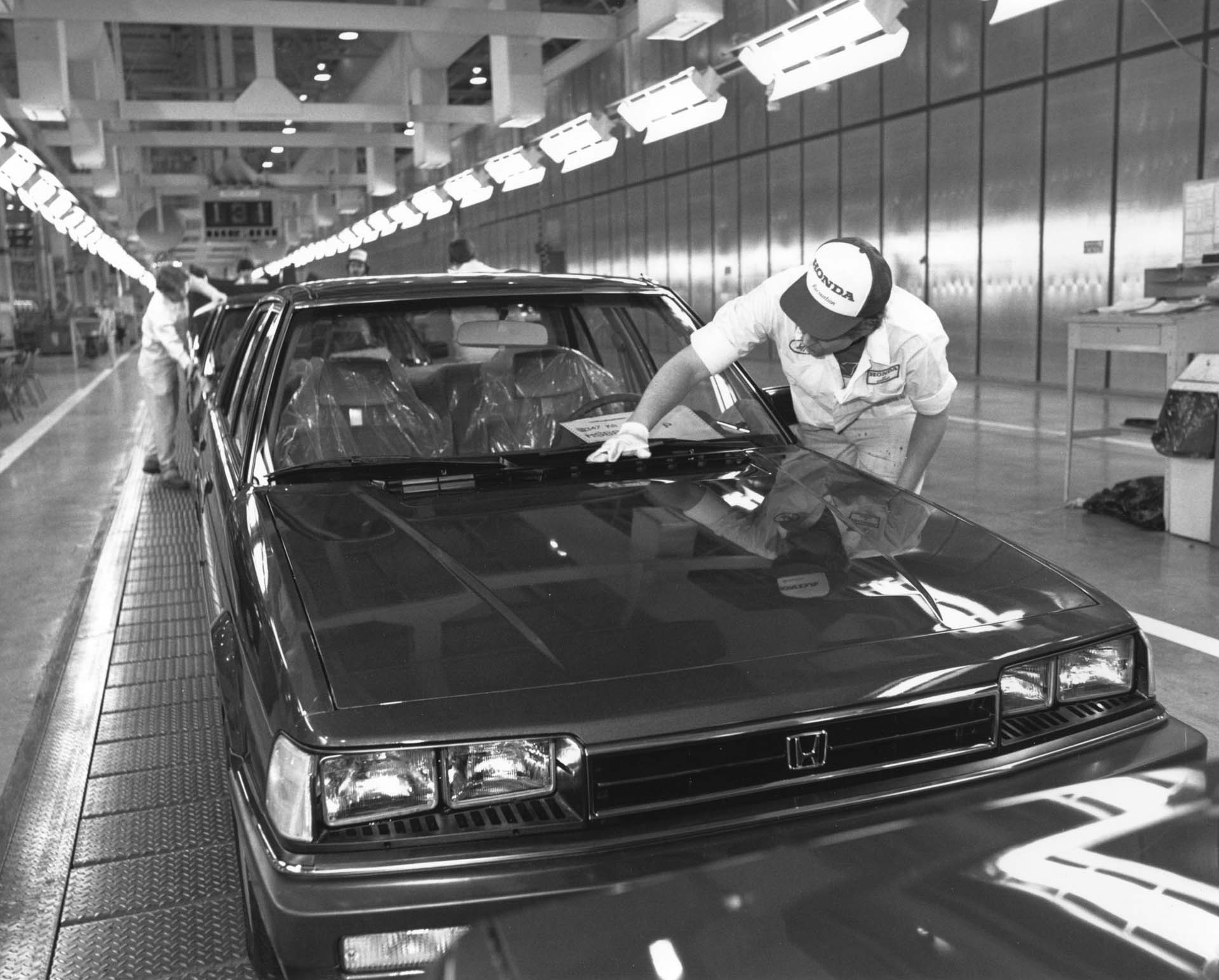
1981, and the world entered a new decade to the strains of Hall and Oates, Air Supply and Olivia Newton-John. Oof. However, for the second-generation Accord, it was time for things to get physical.
First off, the Accord was now built not only in Japan, but in the US as well. Honda’s Marysville plant began production of the second-generation car, establishing a legacy for Honda in America. The current NSX supercar was designed and built by people who can trace their connections with Honda all the way back to the first US-built Accords.
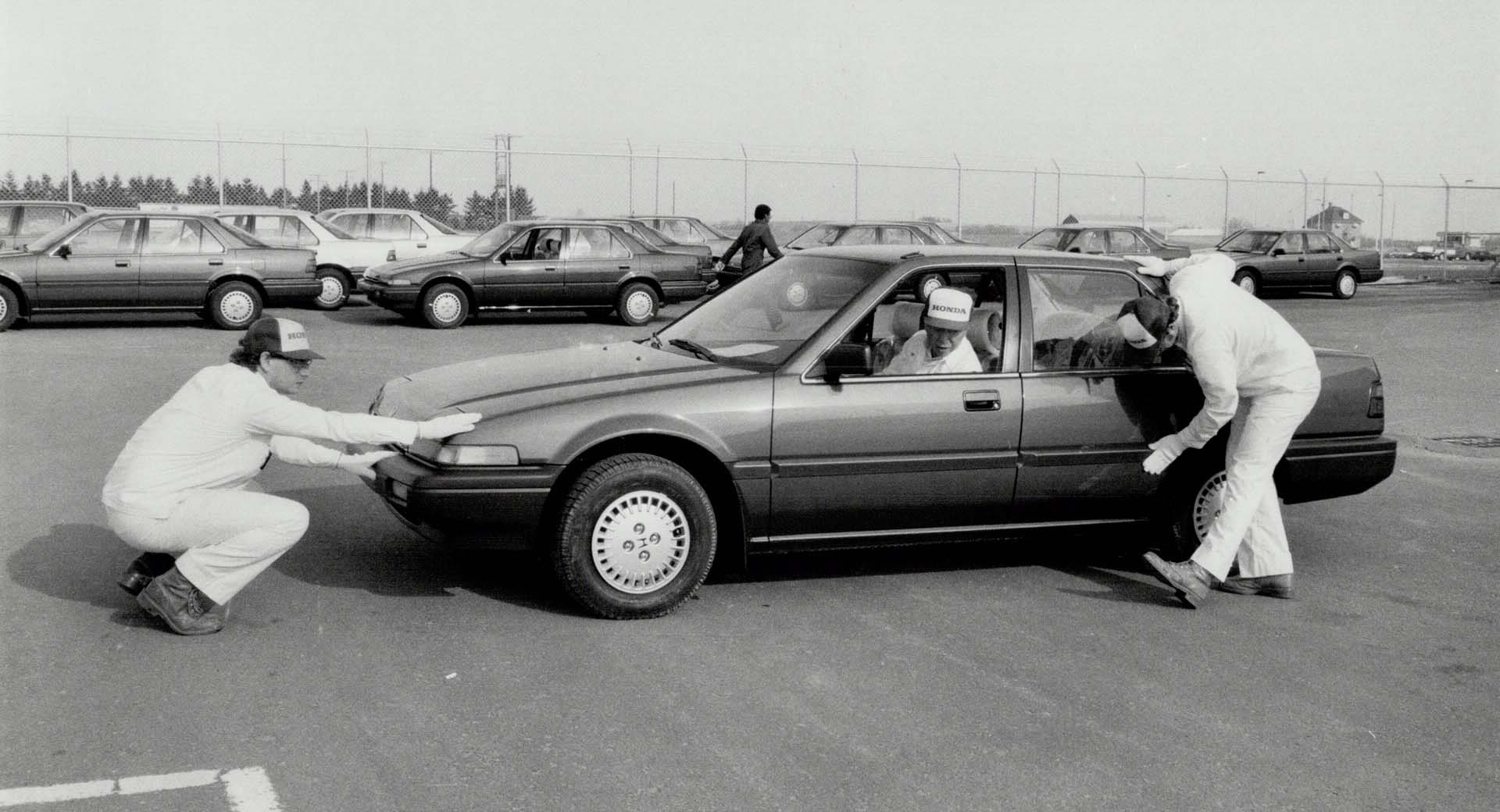 Canadian production of the Honda Accord began November 1987 in Alliston, Ontario.
Canadian production of the Honda Accord began November 1987 in Alliston, Ontario.
Quickest of the second-generation cars were those equipped with fuel injection. The Accord SE-i made 101 hp from its fuel-injected 1.8L engine, not too shabby for 1985. A proper four-speed automatic transmission was now on offer, as were big car features like leather seats and power windows.
In Canada, Accord production started in 1986. At the time, Bryan Adams was tearing up the charts with anthems like Summer of ’69 (sorry, America), and Expo 86 was showcasing Vancouver to the world. In Alliston, Ontario, the third generation Honda Accord rolled off the line, becoming the first Japanese nameplate to be built in Canada.
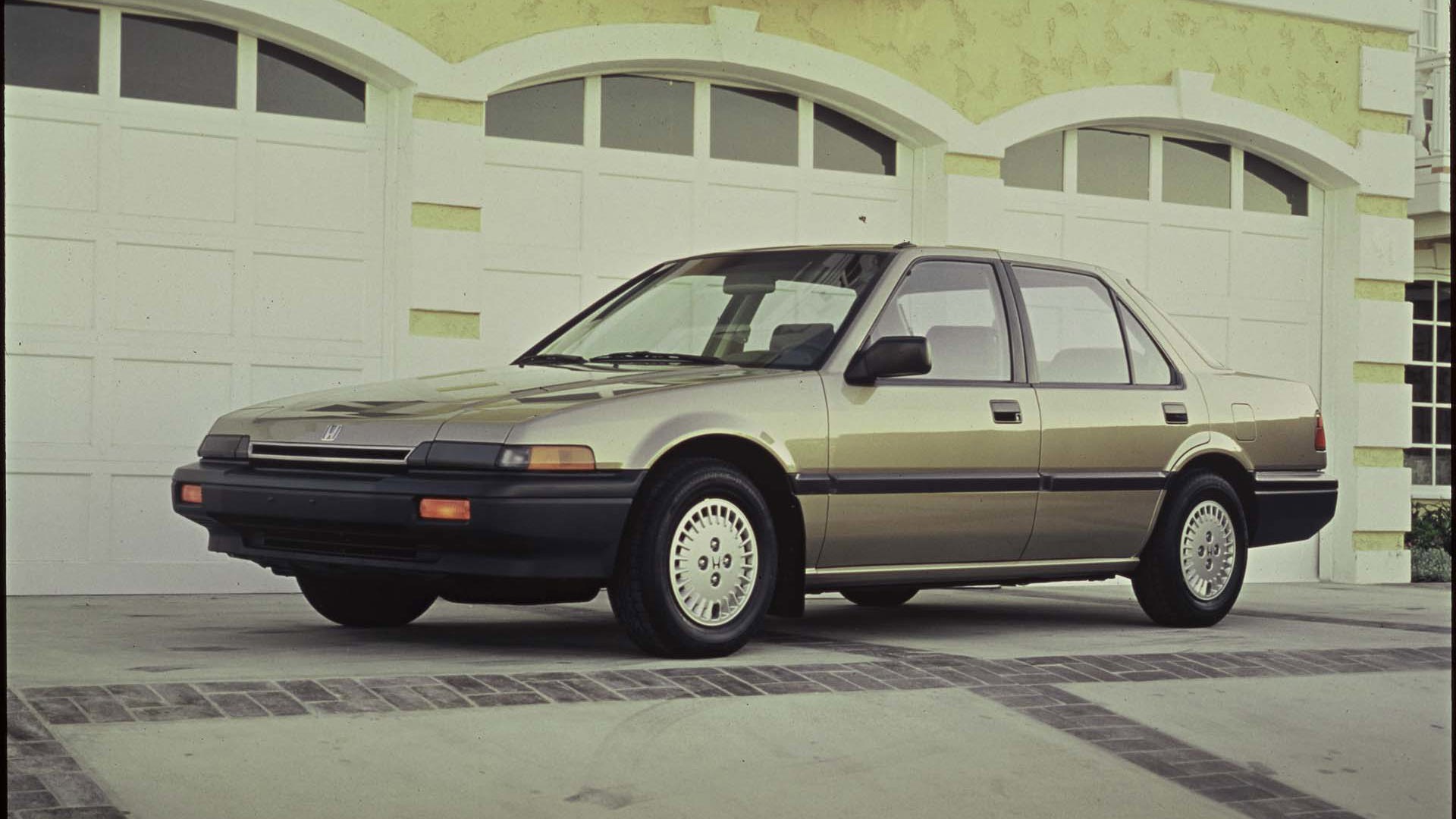
The third-gen car added some serious cool factor to what was a mainstream choice for Canadian families. First of all, it had pop-up headlights, and a wedge-y shape when they were down. Second, the third-gen Accord was the first Honda to have the company’s much-vaunted double-wishbone suspension.
With a fuel-injected 2.0L engine making 110 hp, the Accord injected a bit of fun into the lives of commuters. Again, it was simple, durable and reliable, and well-equipped compared to the competition. Towards the end of the decade, a coupe version also came on the market, giving Accord fans a sleeker, more stylish option. One slightly interesting detail is that the Accord Coupe was designed and built exclusively in Ohio, and actually exported back to Japan.
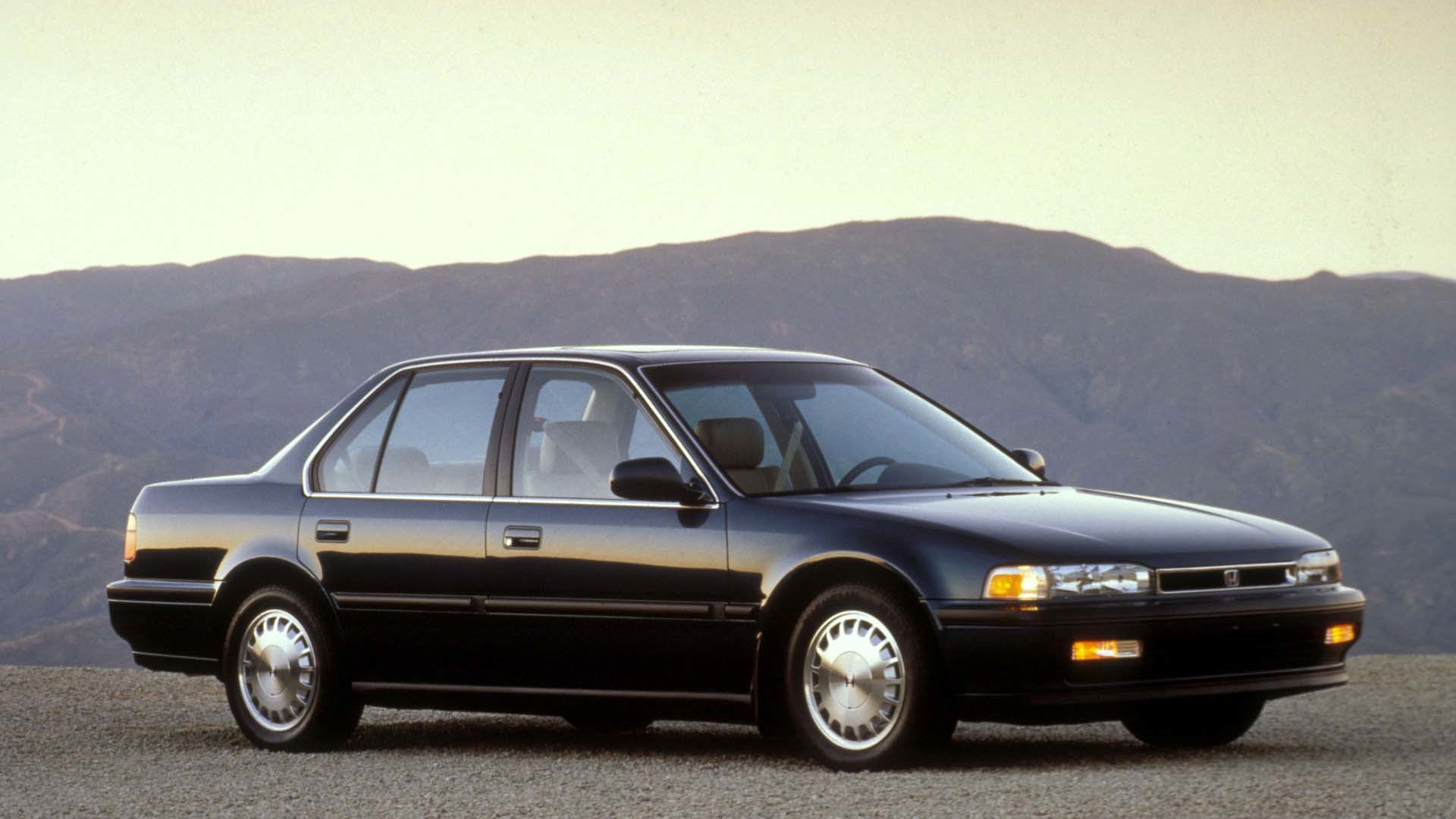
1989 was a big year for Honda. The NSX debuted, showing the world that Honda engineering could put Ferrari on notice. The fourth-generation Accord arrived for the 1990 model year, basking in the glow of the mid-engined supercar halo.
A basic EX Accord with a five-speed manual cost $17,295, with the 130 hp EX just tucking in below $20,000. Also available for the first time was a new wagon variant, available in EX-R trim. These last are a neat way to get a really practical and dependable classic car, as they’re a bit rare and most are nearly at the 25-year-old mark.
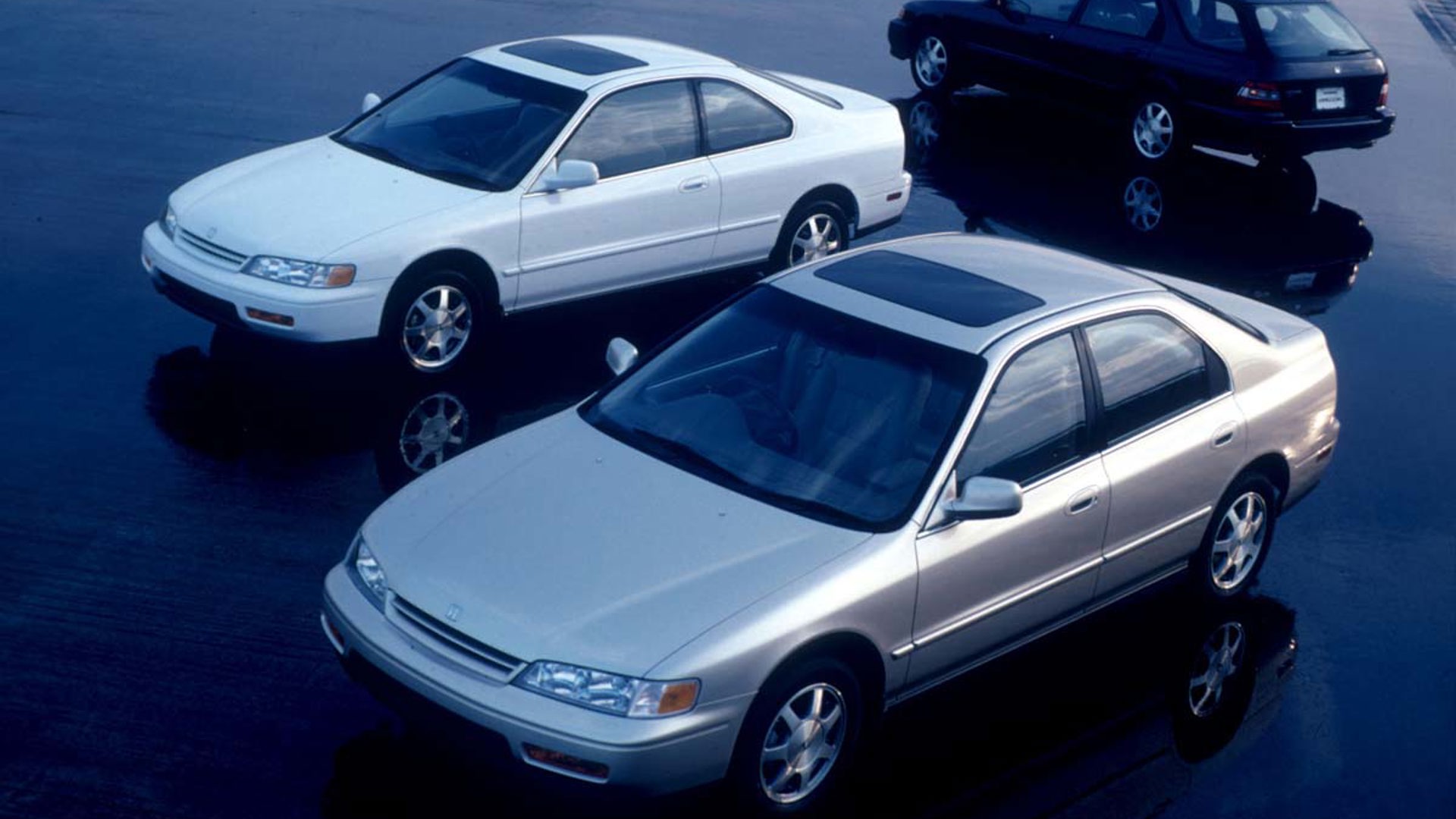
For its fifth generation, which arrived in 1994, the Accord got more than just the halo from the NSX, it got the addition of VTEC. The acronym stands for Variable Valve Timing and Lift Electronic Control, and allows for a little kick of extra power at the top end of the rev range. Even now, wringing a Honda engine right out to redline is more satisfying than some of the competition, thanks to the extra power up top.
Most powerful of the fifth-generation cars were the new V6 models, available in 1995. These got a 2.7L six with 24 valves, revving smoothly and making a respectable 170 hp. Let’s face it: you weren’t going to be putting an NSX in the driveway any time soon, but everyday demands didn’t mean a total lack of fun. In fact, the Accord was one of the most fun-to-drive sedans on the market.
While the V6 suited North American roads, the hottest Accord at the time was reserved for the Japanese market. Powered by a 2.2L four-cylinder that made peak power at 6,800 rpm, the 190 hp Accord SiR was a screamer. The closest we got was in the Prelude of the same time.
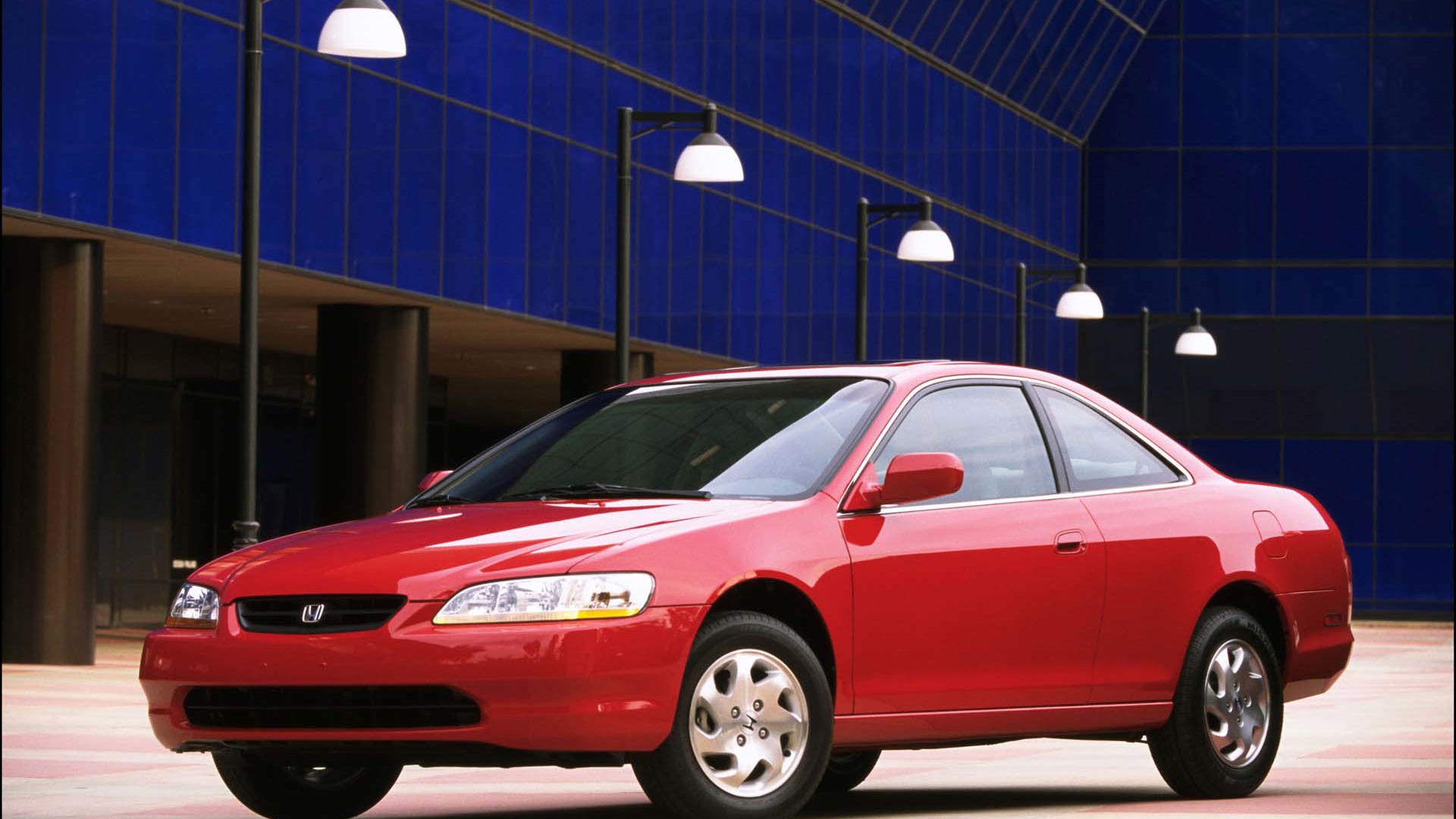
In its sixth generation, Honda decided to split the Accord into three. North American customers got a larger, more comfortable car, while the UK and Japan got slightly nimbler versions. There was even an Accord Type R overseas.
We, however, had to make to with a standard in-cabin air filter. And the wagon was discontinued. While excitement levels were low, the Accord continued to sell strongly based simply on features and a reputation for reliability.
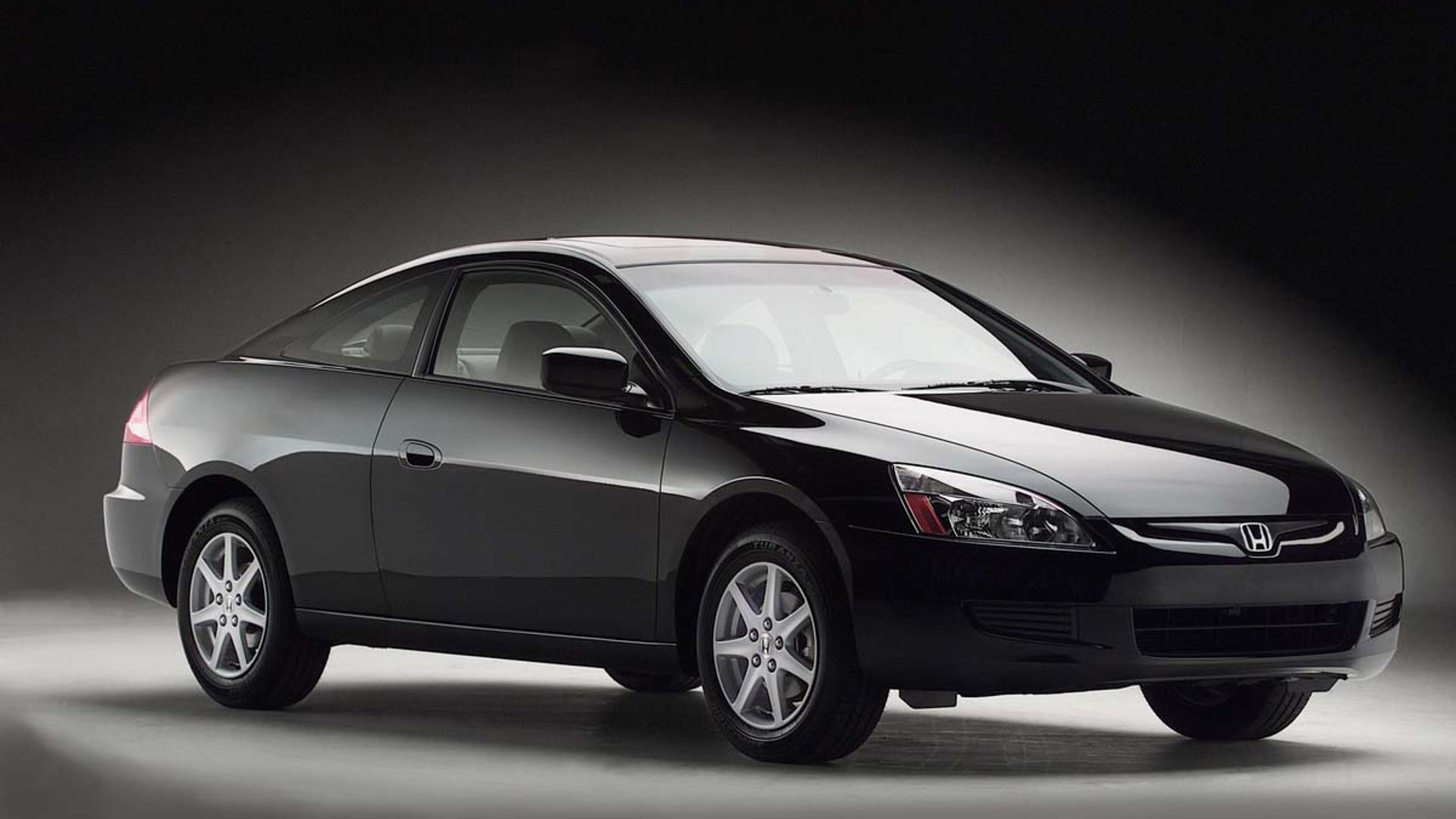
The seventh-generation Accord was, simply put, one of the best four-door driver’s cars this side of a BMW 3 Series. Sure, it was a front-wheel-drive box with four doors, but if you fancied yourself a bit of an inner Ayrton Senna, there was a great-shifting five-speed manual and your choice of either a 160 hp 2.4L four-cylinder, or a 3.0L V6 that made a screaming 240 hp.
A few years later, the Accord got into the hybrid game, but with a markedly different approach than Toyota. The Accord Hybrid was introduced in 2005, and the facelifted 2006 model topped the range with 253 hp and plenty of torque. It didn’t sell all that well, certainly not when compared to the four-cylinder models, but it remains an interesting machine.
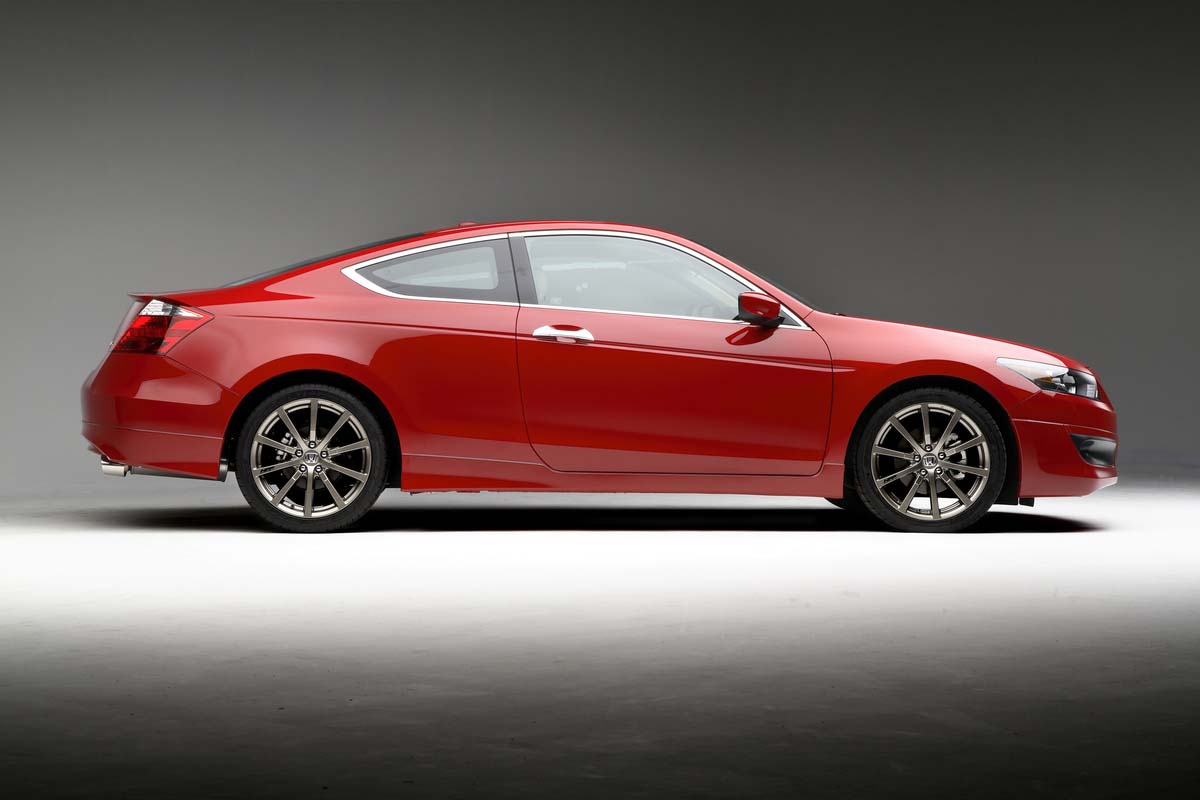
In its eighth generation, the Accord finally stumbled. Apparently chasing Camry sales in the US, the Accord got a whole lot bigger, but a lot less fun to drive. Power increased, but the double-wishbone suspension was gone in favour of a cheaper MacPherson strut setup. On the interstates, you didn’t notice. In the twisties, you did.
However, Honda reacted quickly to the critics. When the ninth and current generation car arrived in 2012, it was a bit more cohesively styled, and a much better handler. The four-cylinder Sport models are very lively indeed, even when equipped with a CVT and paddle shifters.
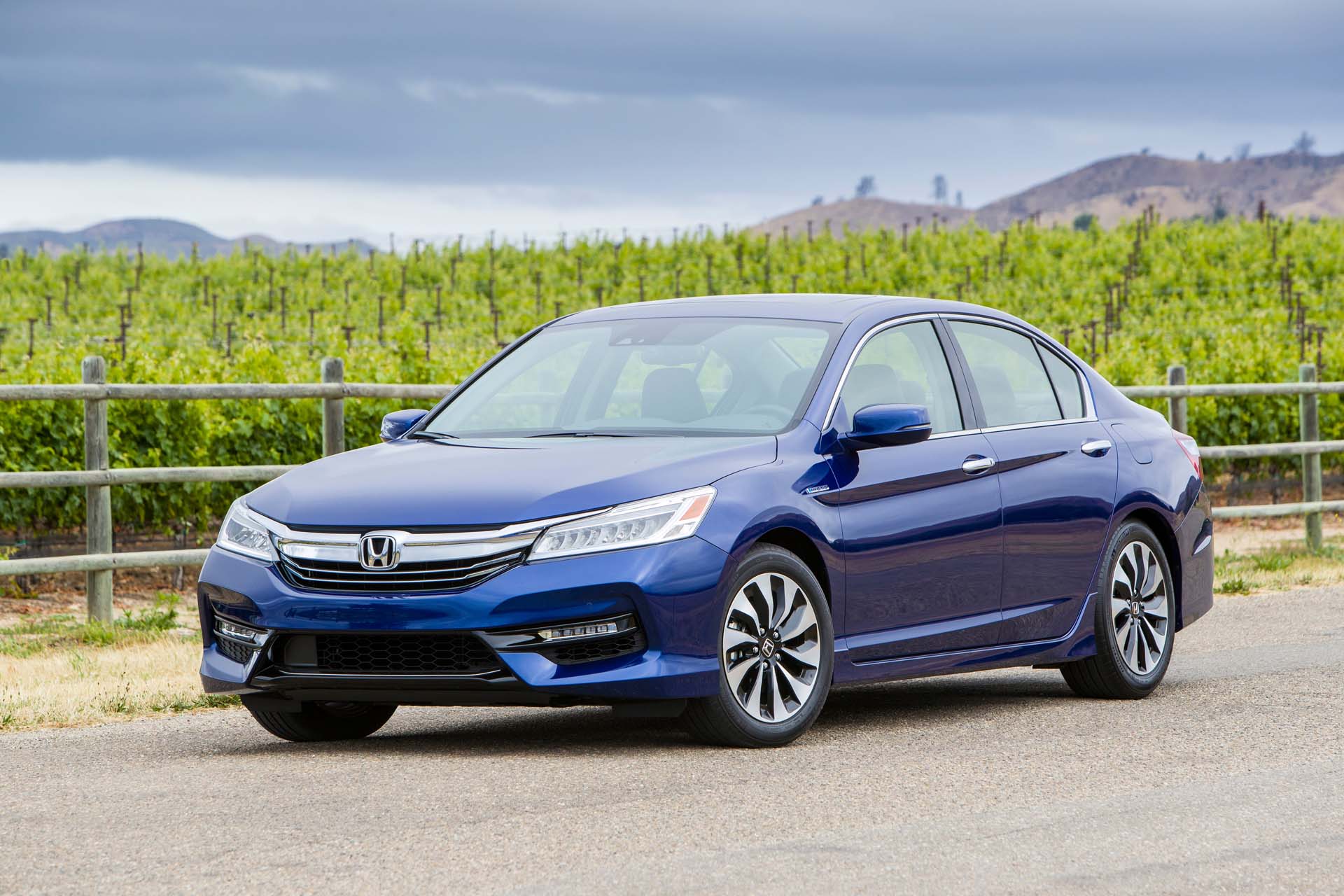
Far bigger than its tiny ancestor, the Accord is now essentially a full-sized car. With the mid-range Honda Accord Sport Honda Sensing, you get a revvy 189hp engine, 19" wheels and a chassis that still likes to dance. You also get a suite of driver’s aids including adaptive cruise control and lane-keeping assist, the better with which to battle the commute.
Four decades since it first arrived, the Accord still holds true to its original ideals. It’s fun to drive and light on its feet, while still being completely practical for the everyday. Middle age never looked so good.
